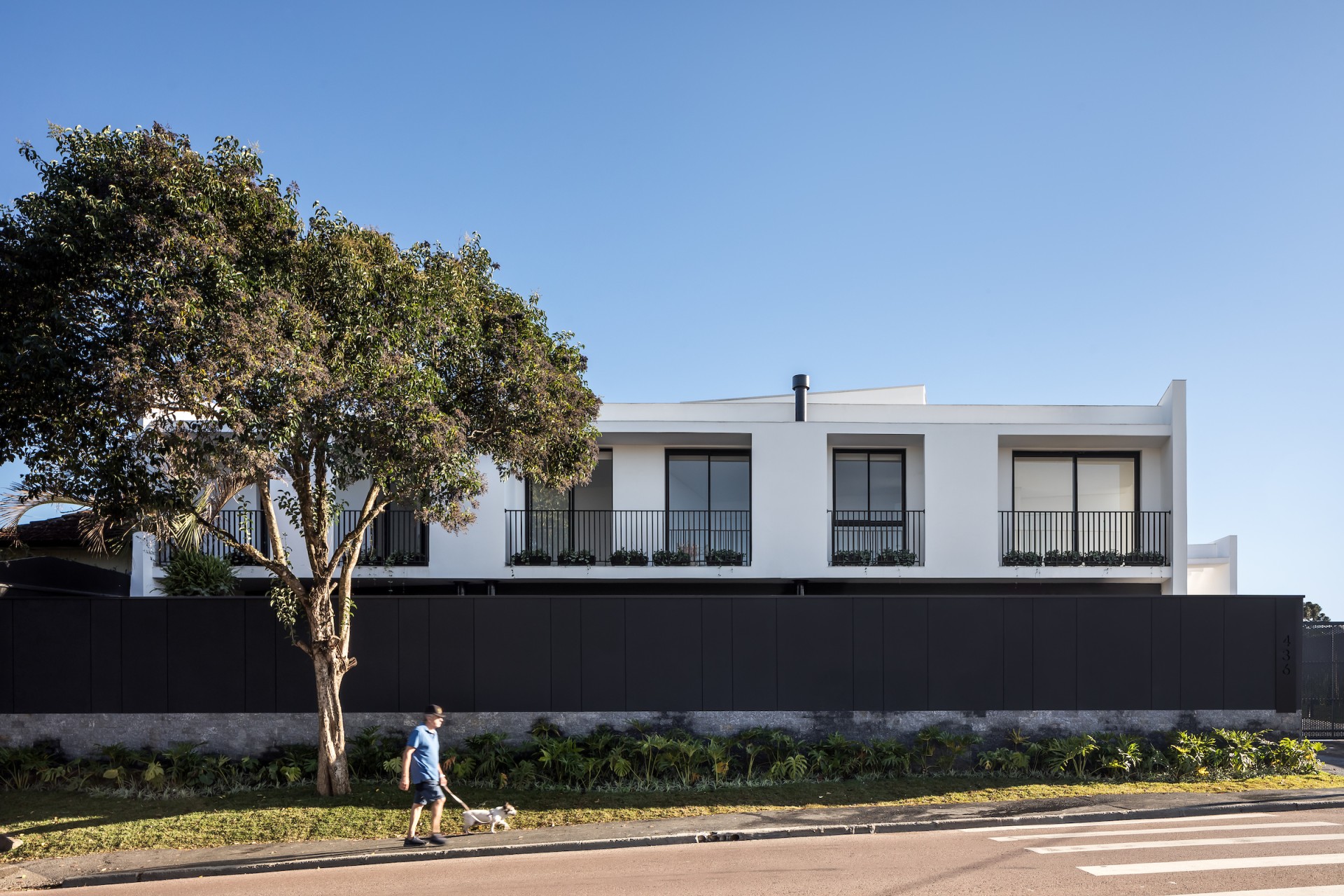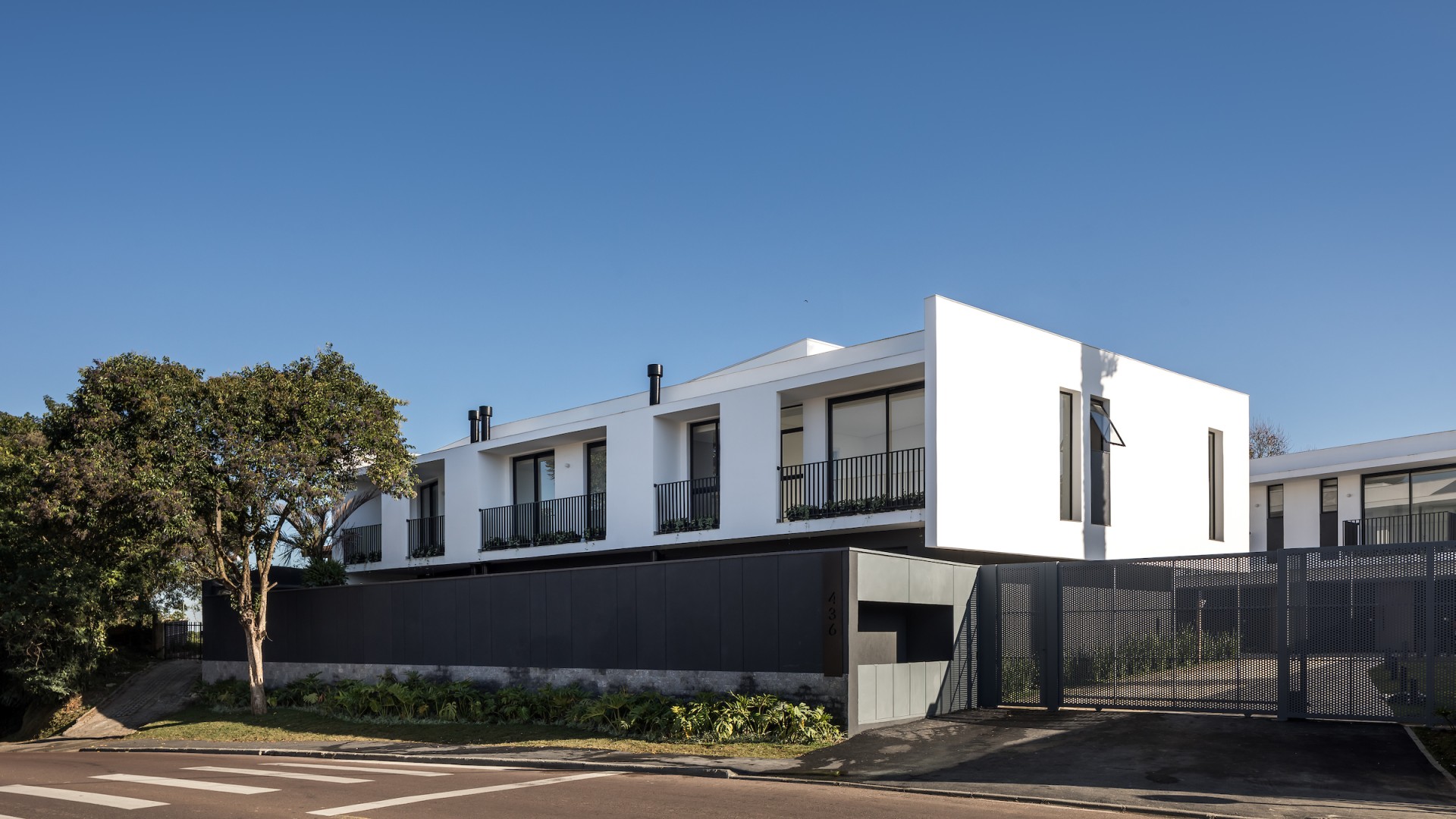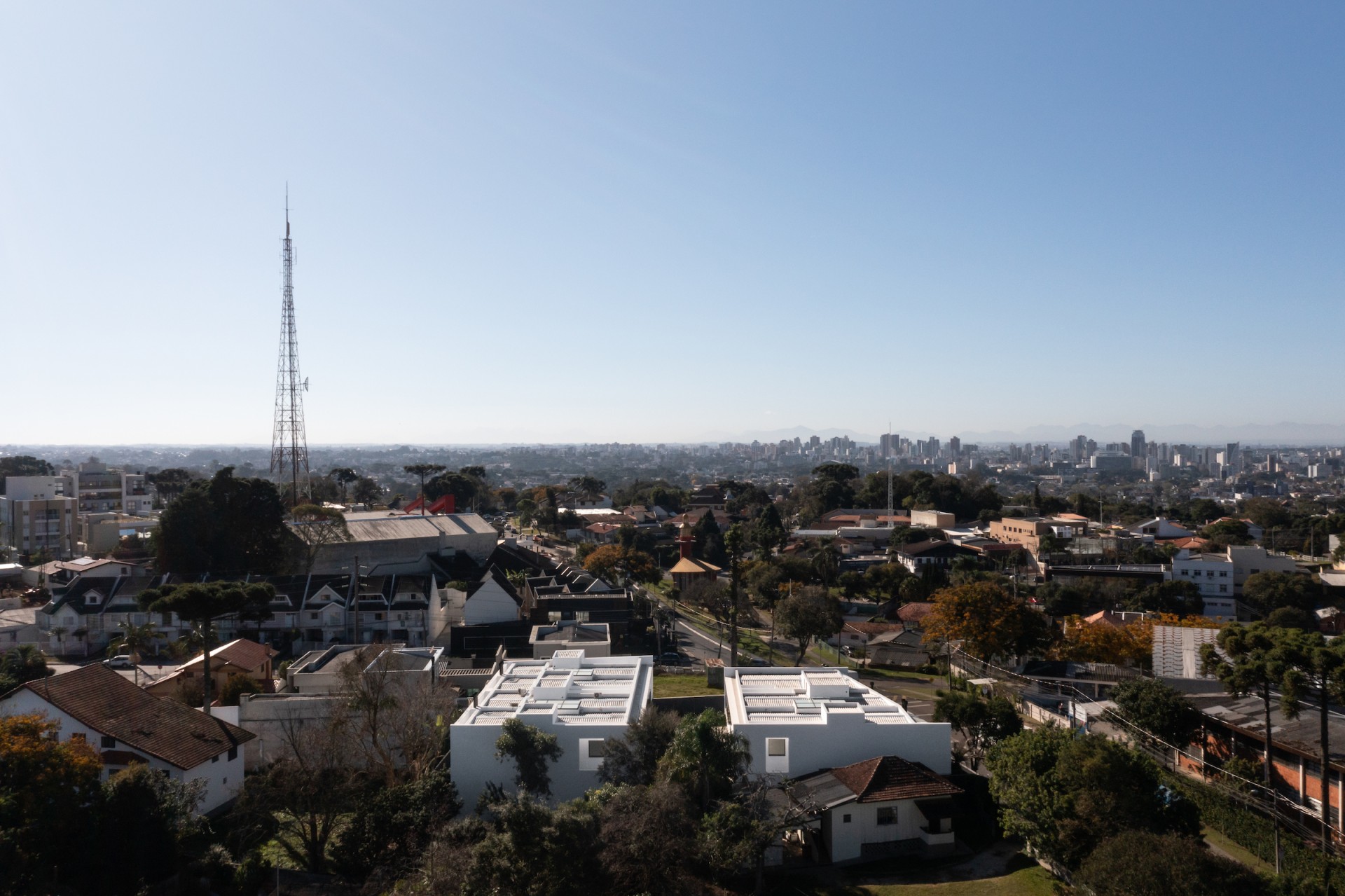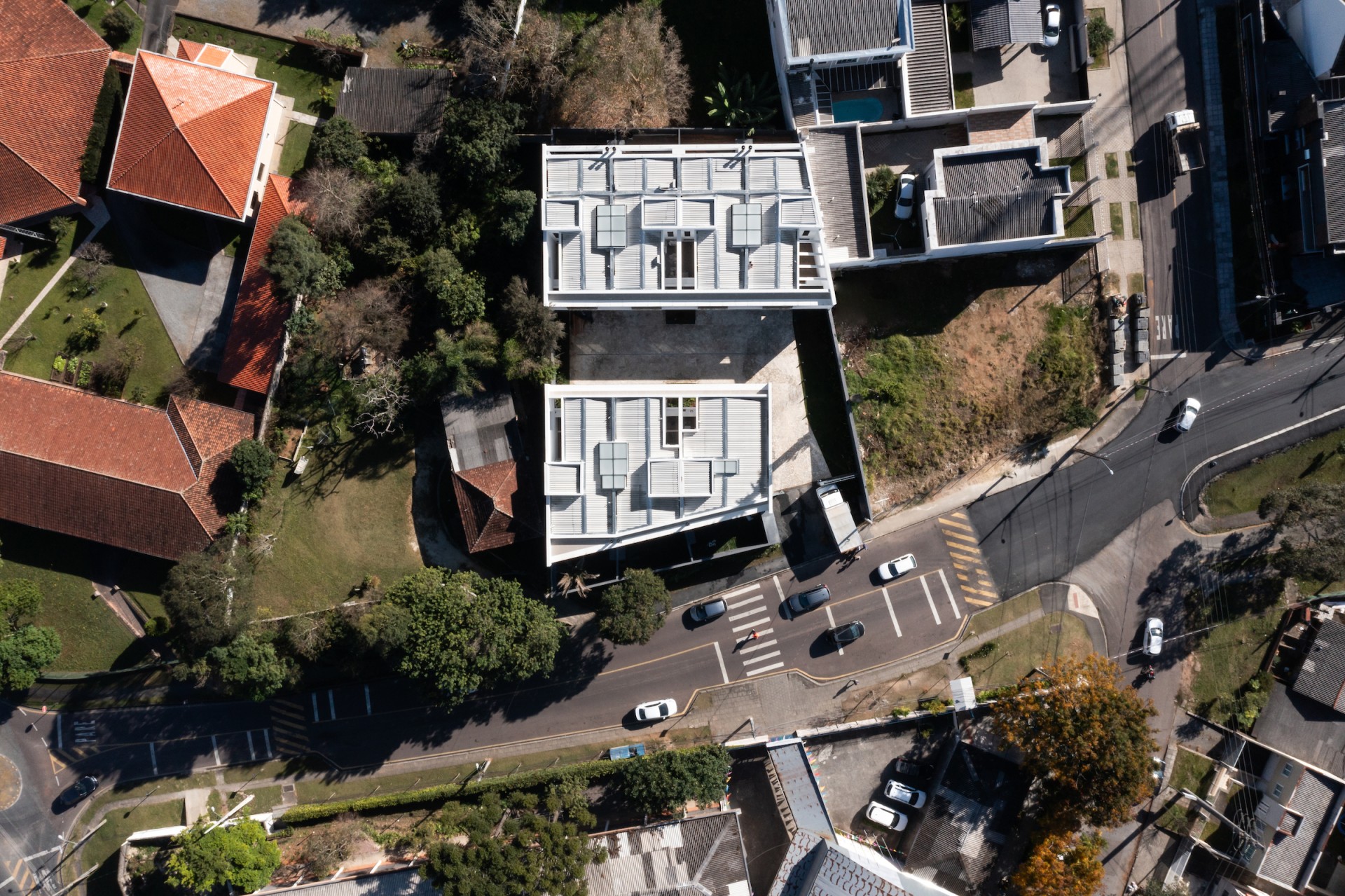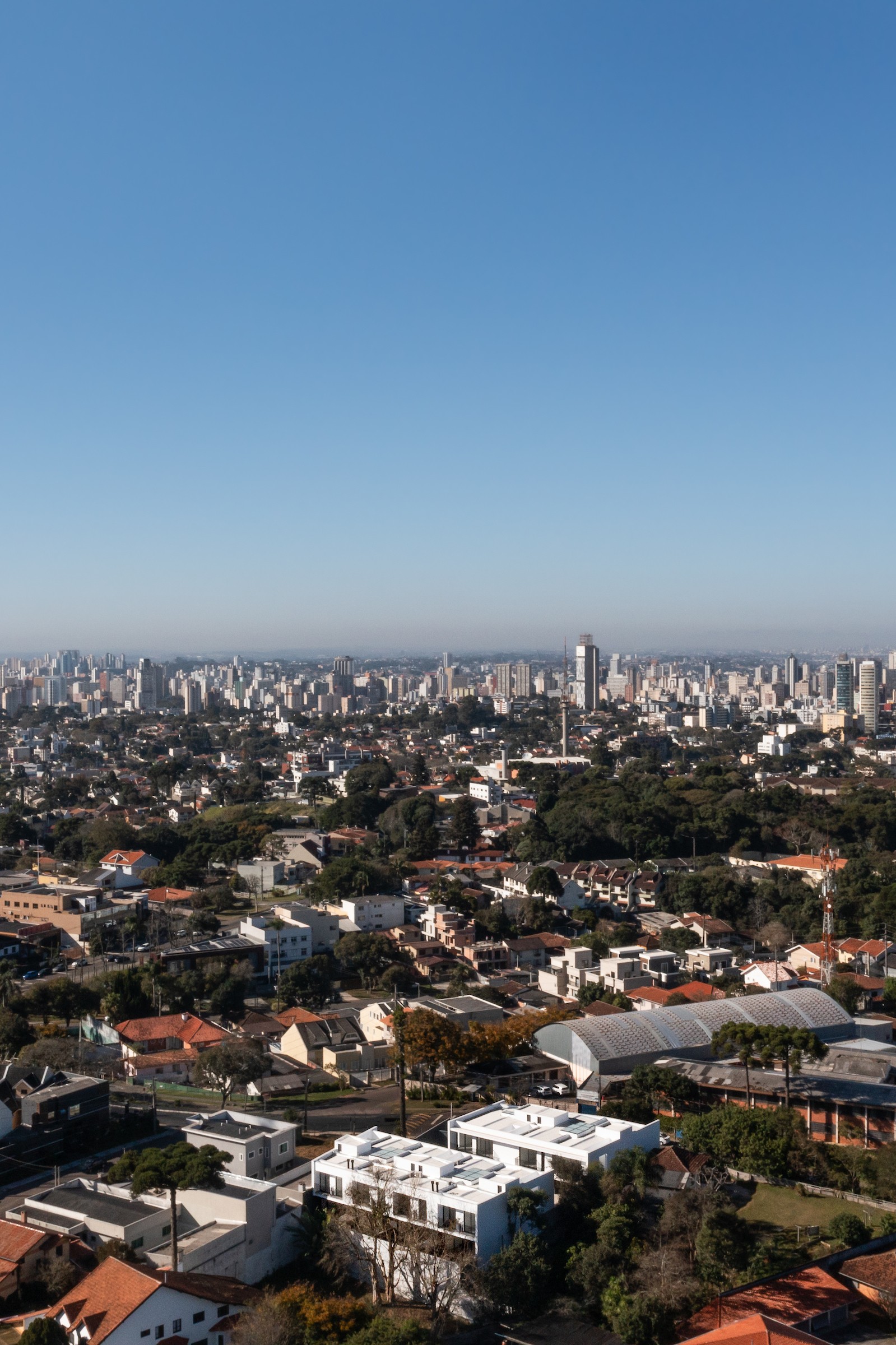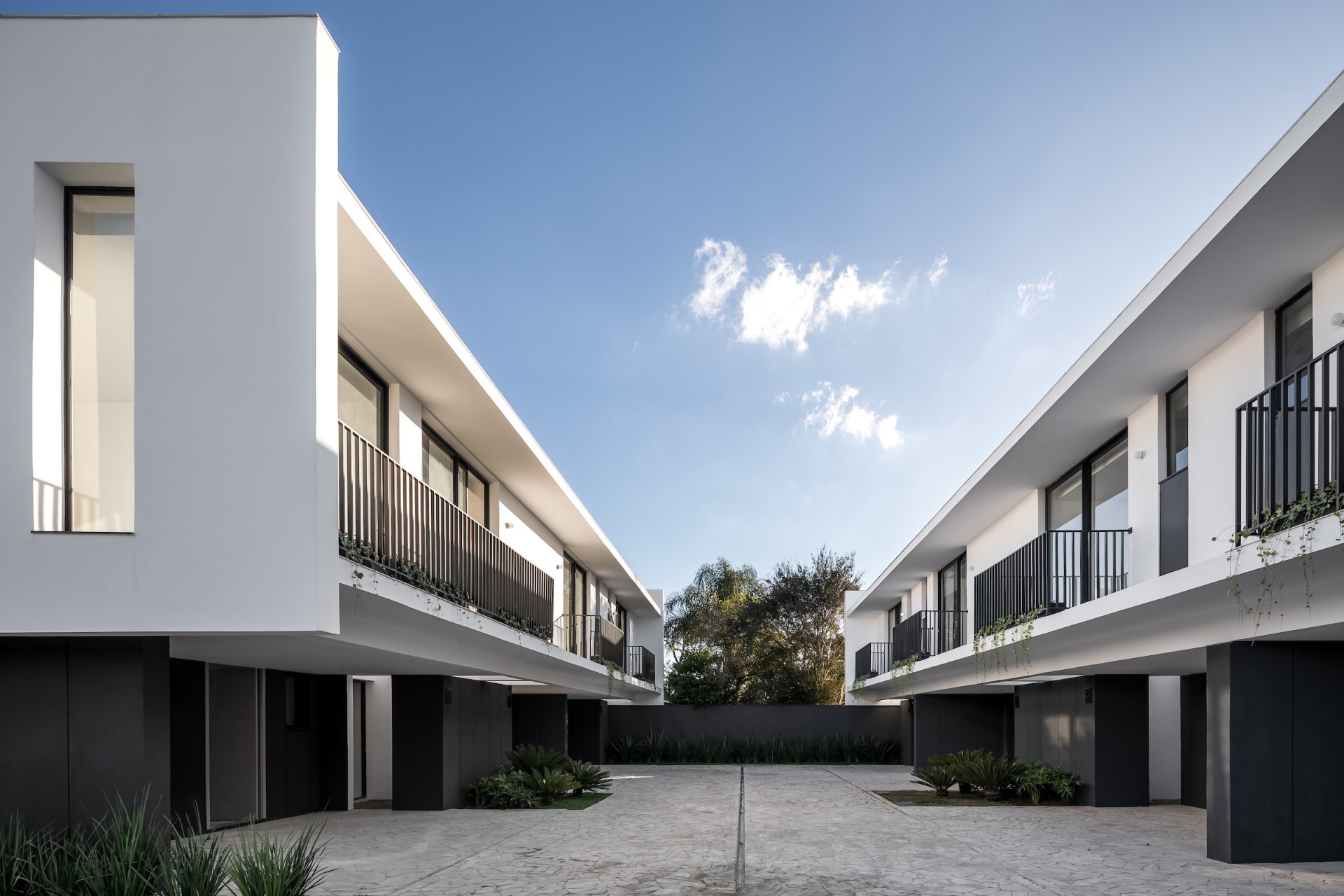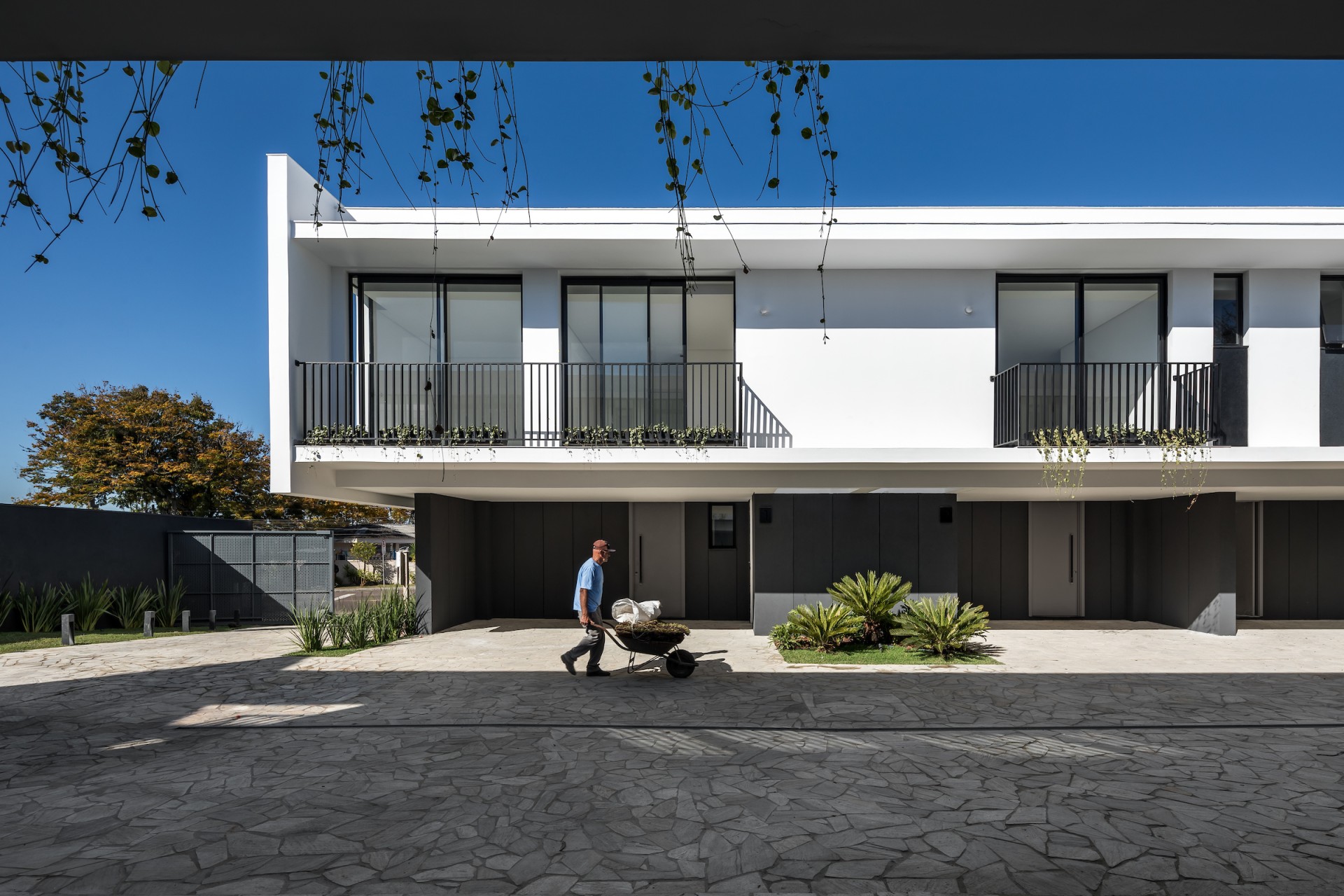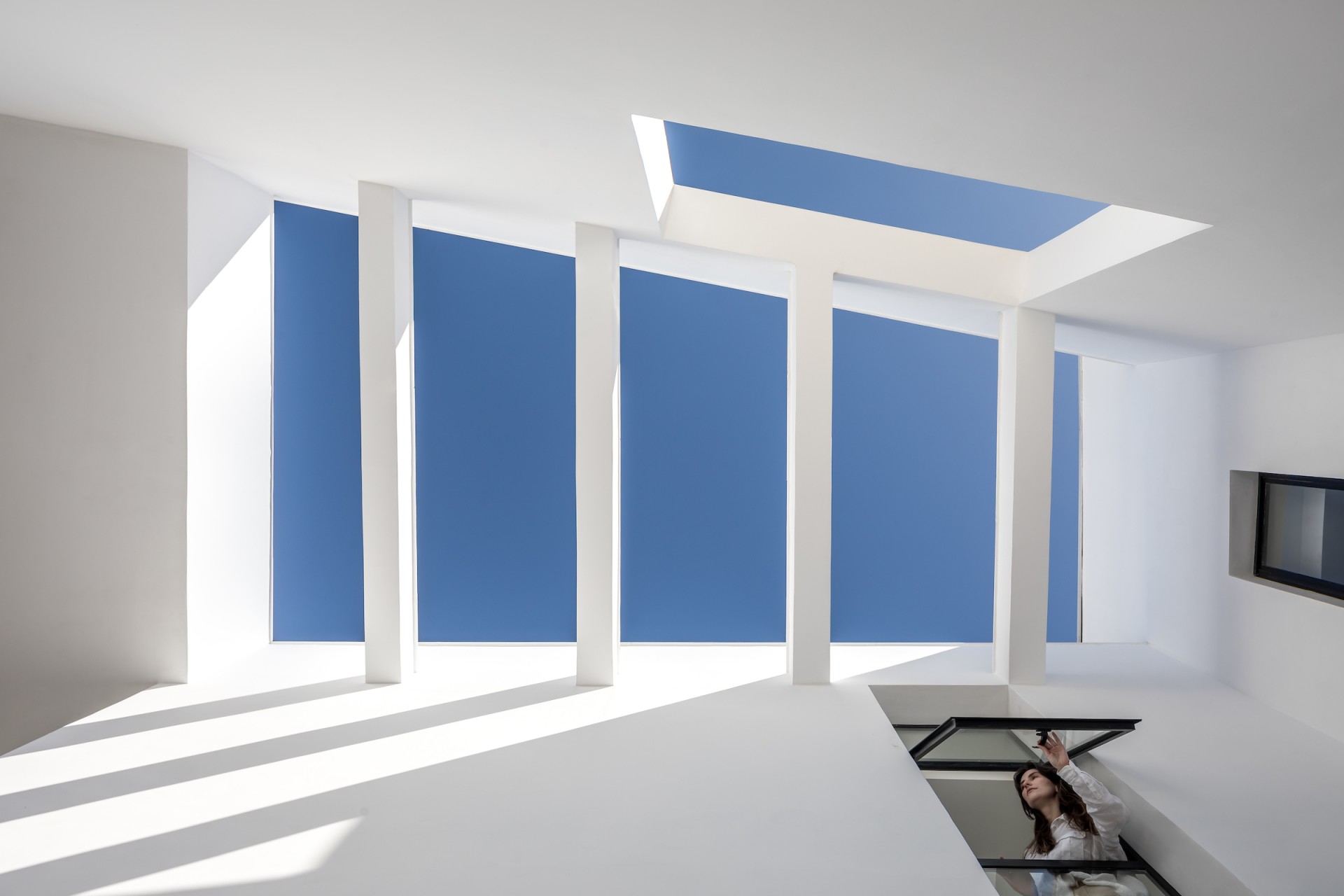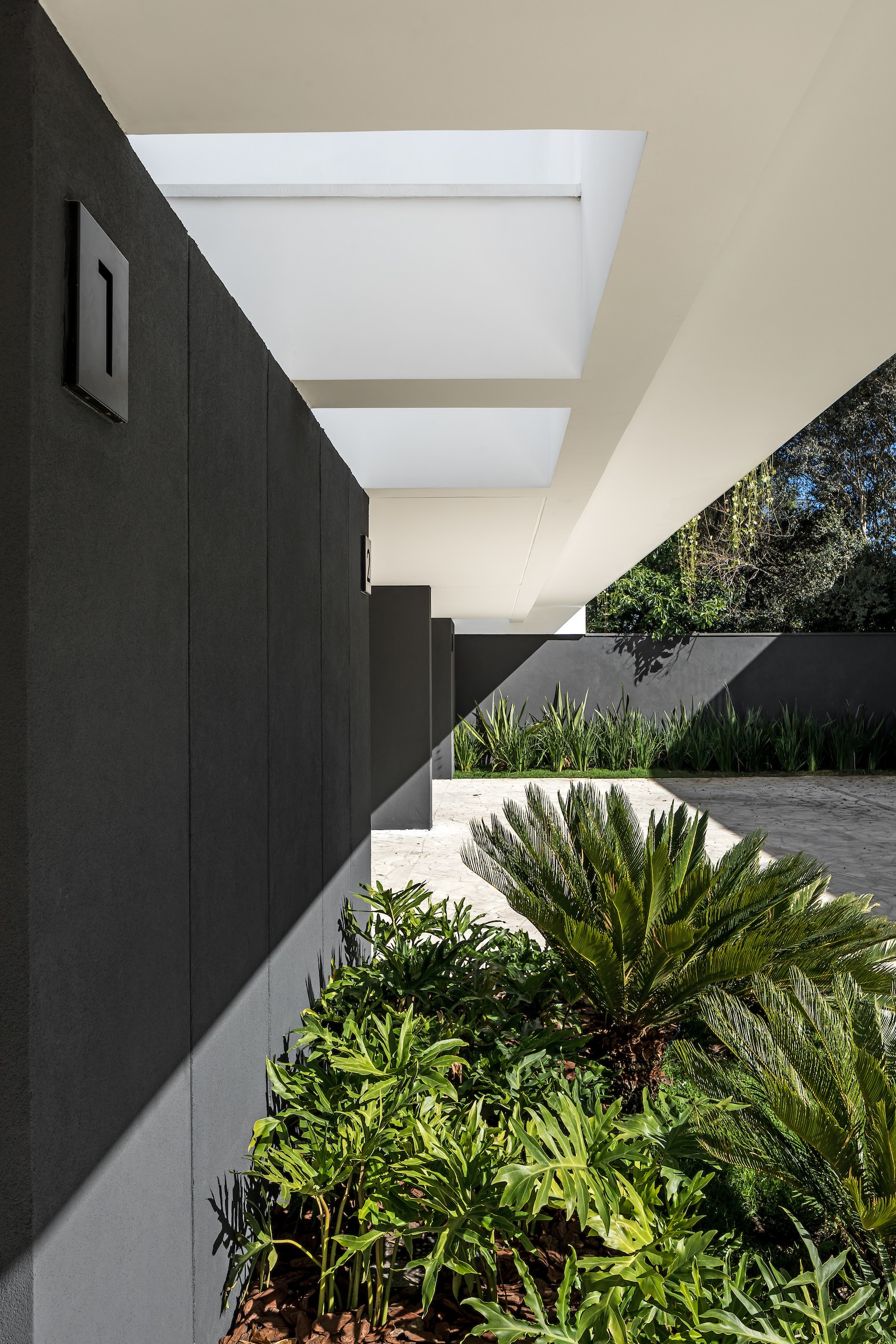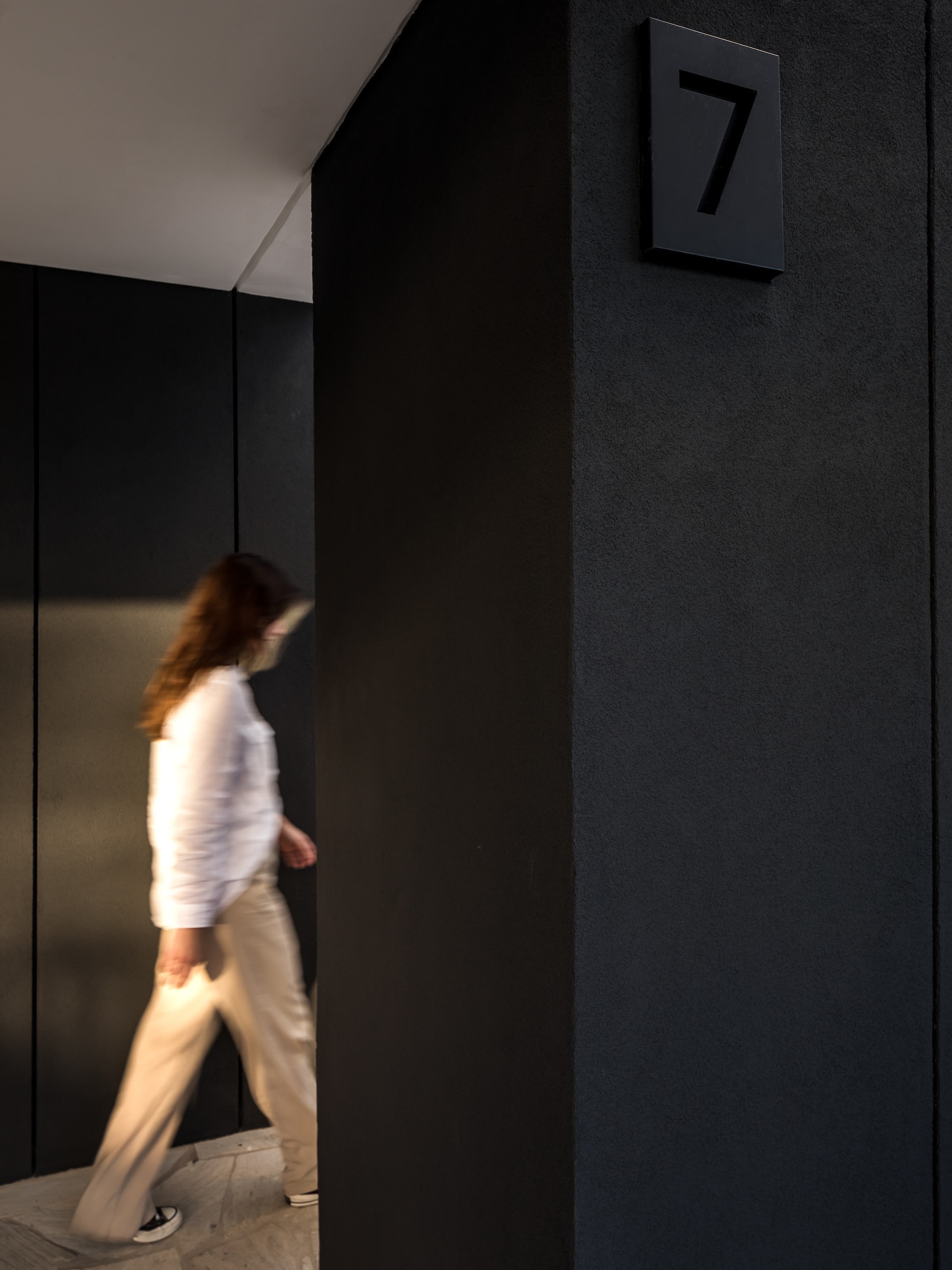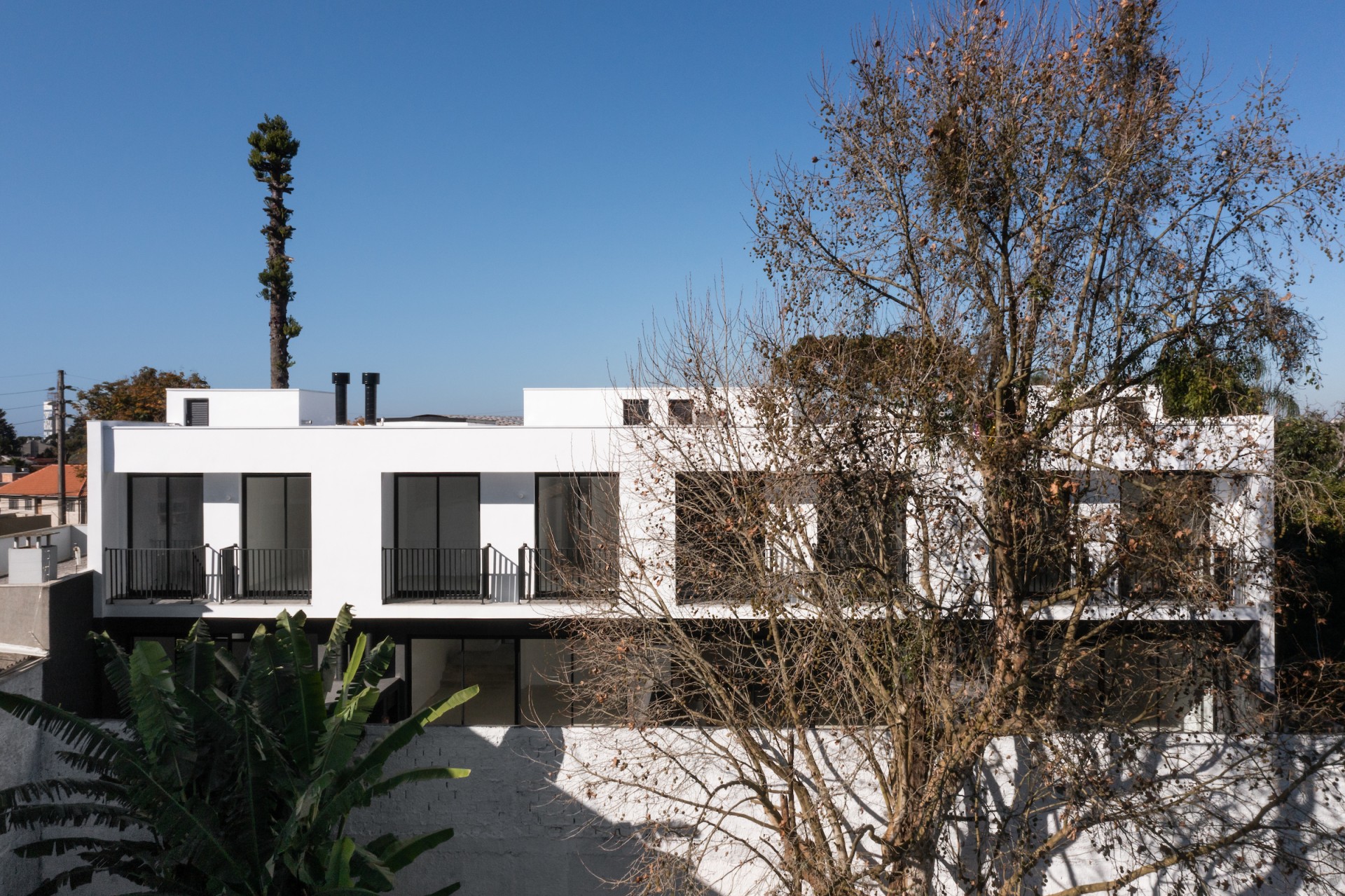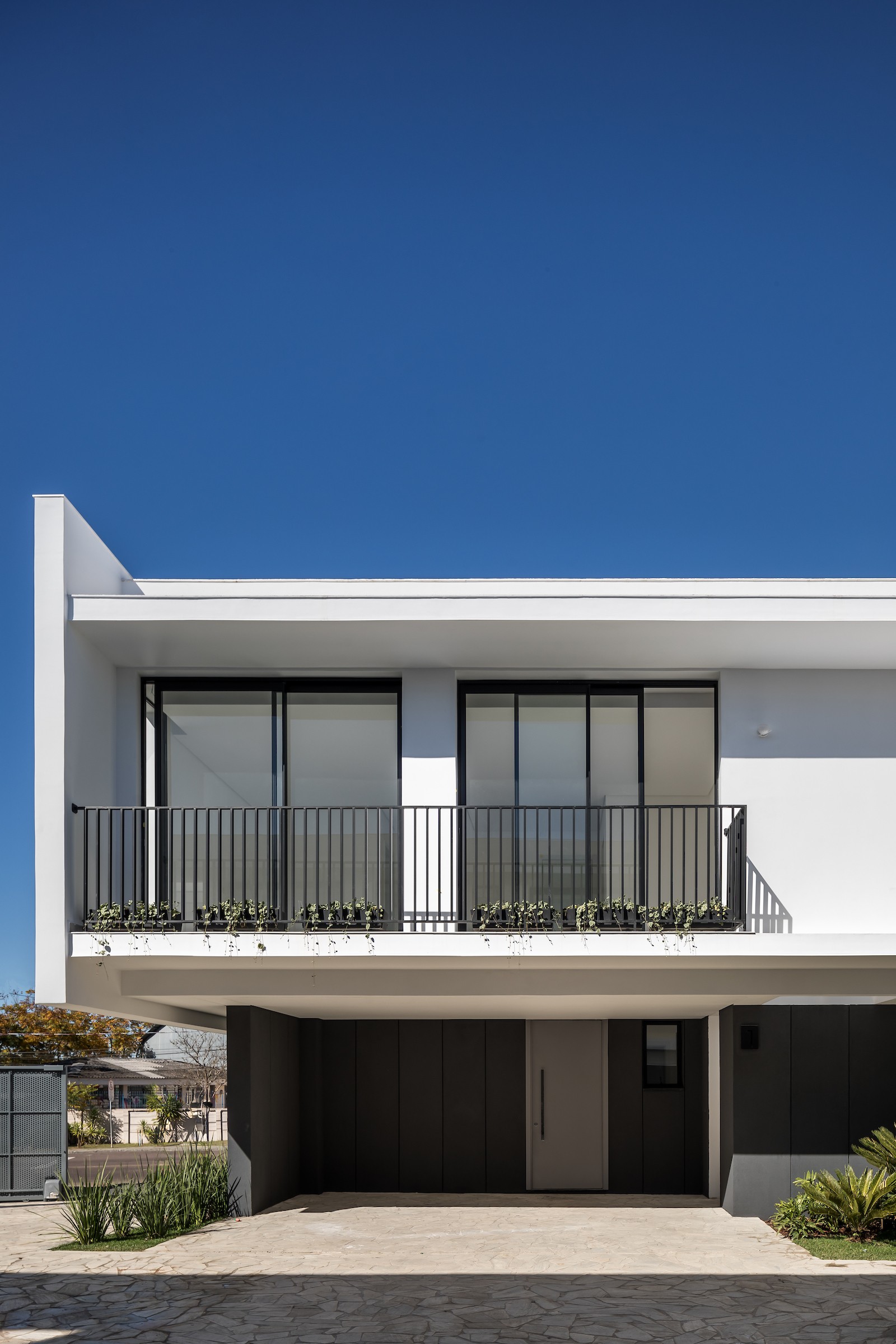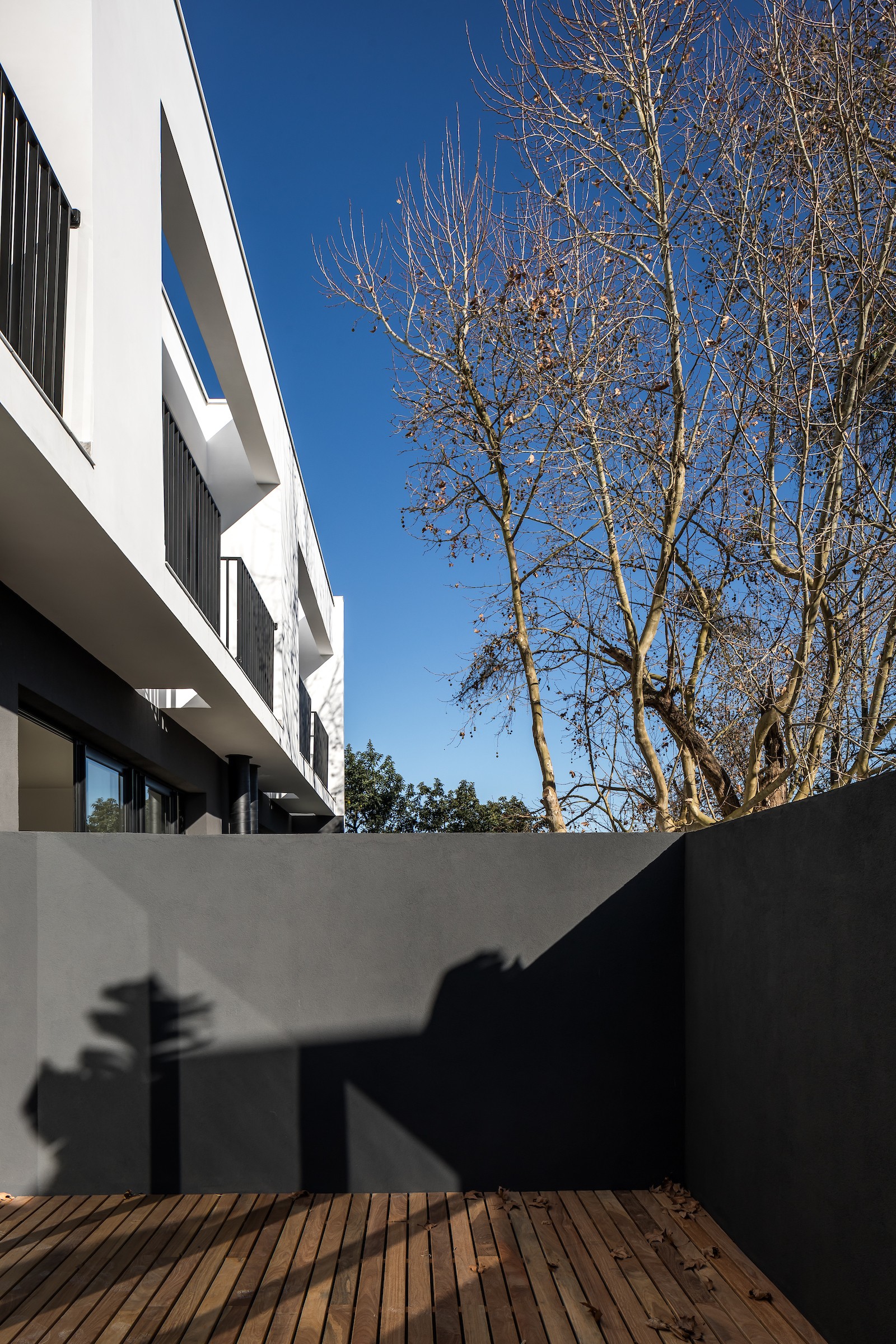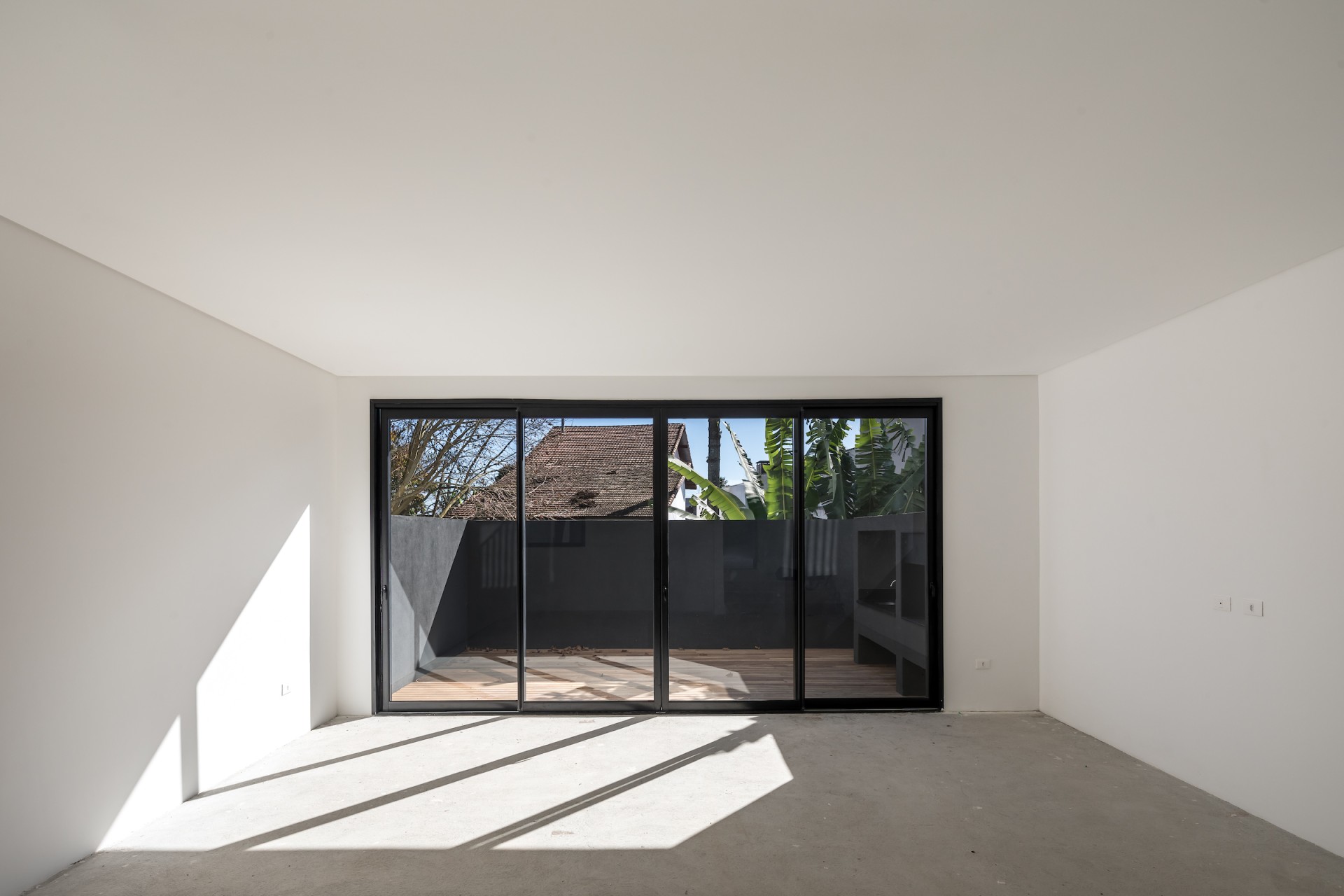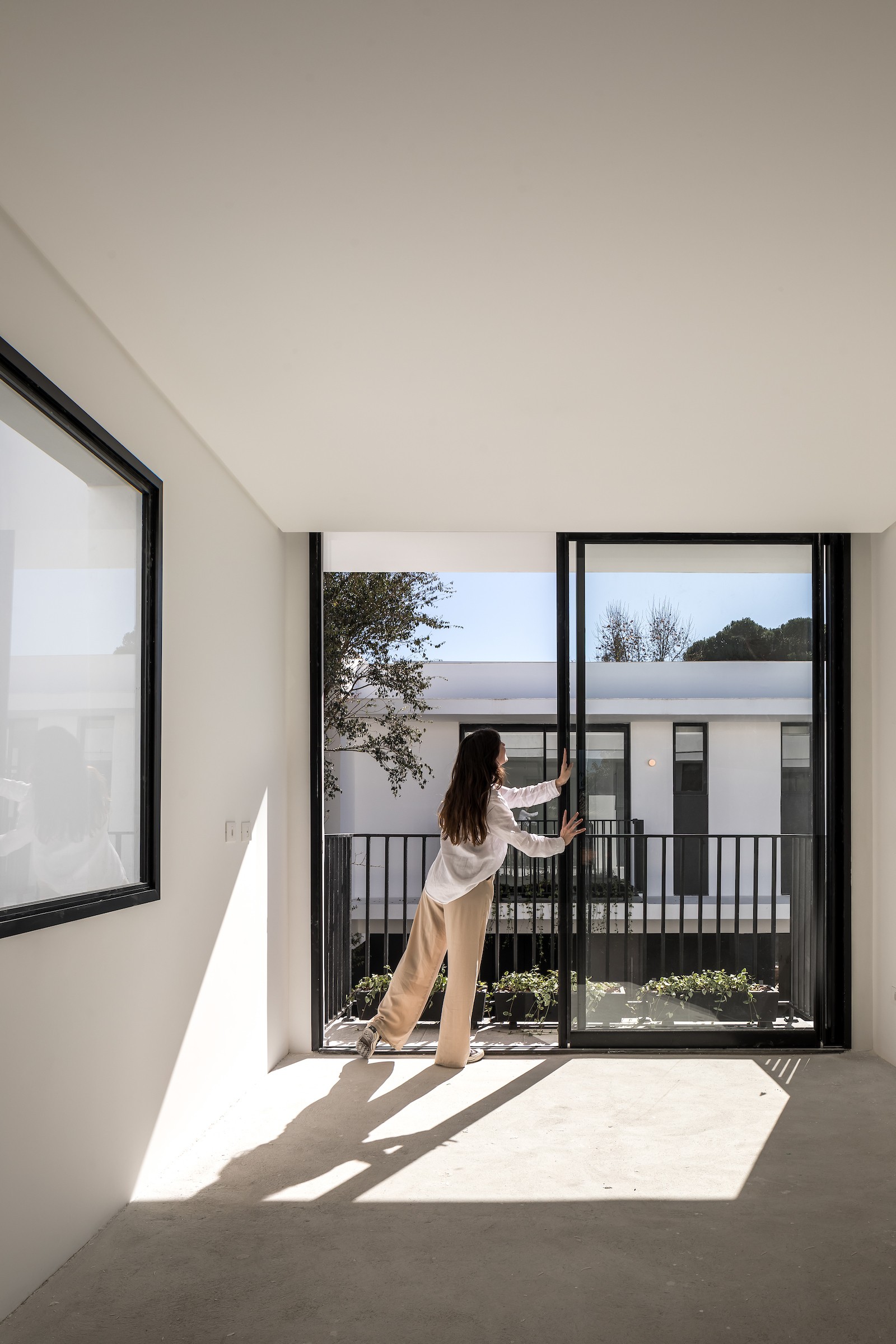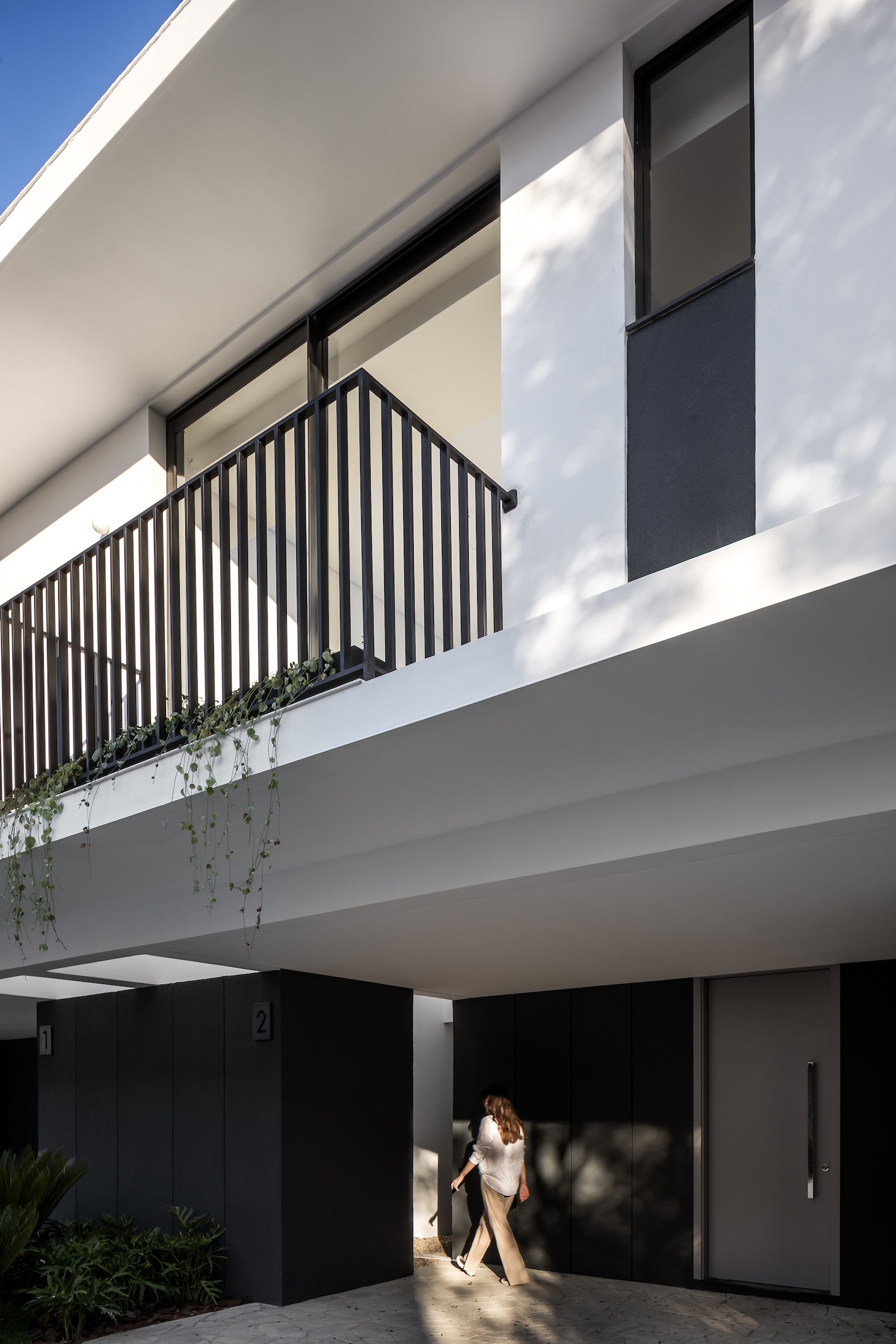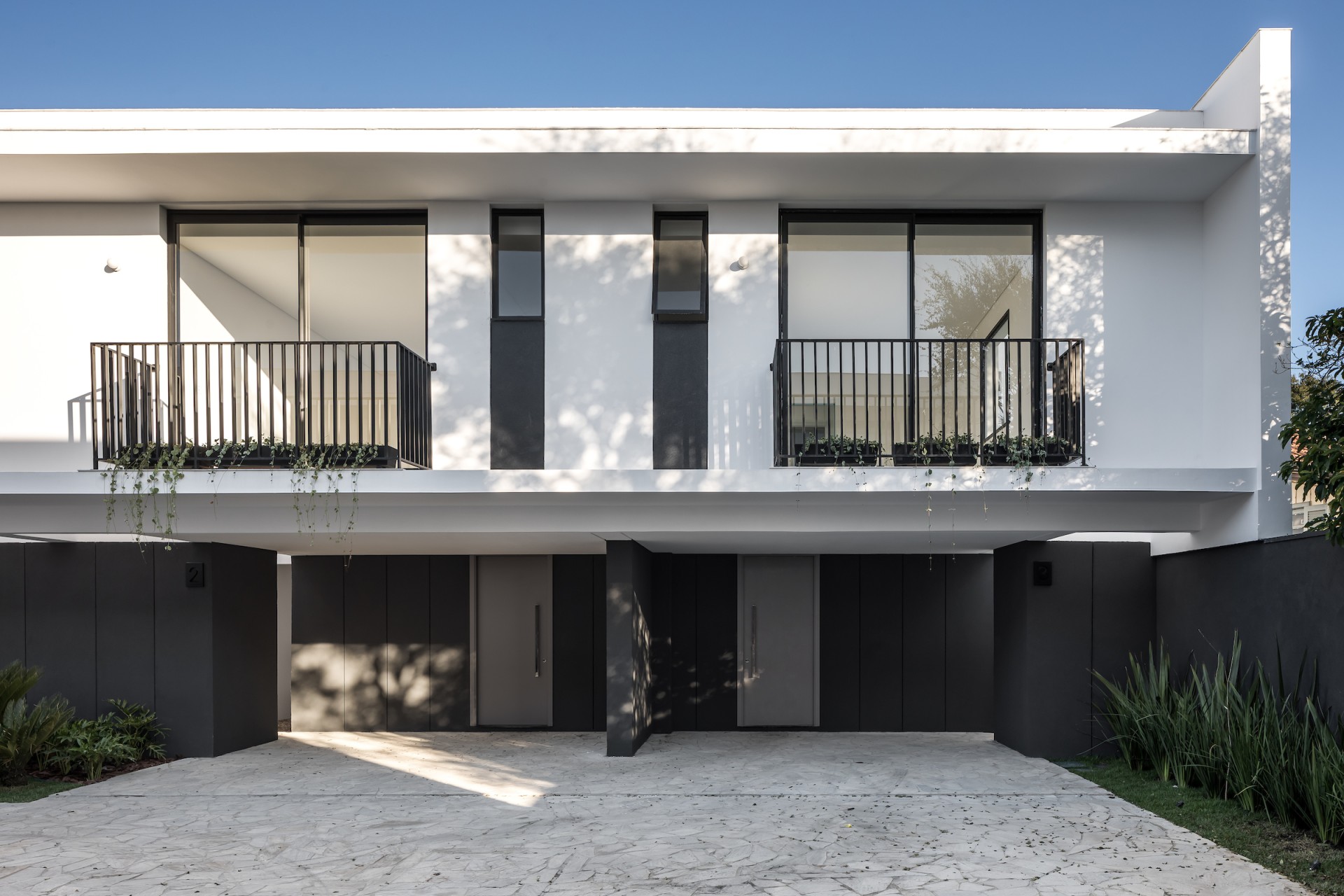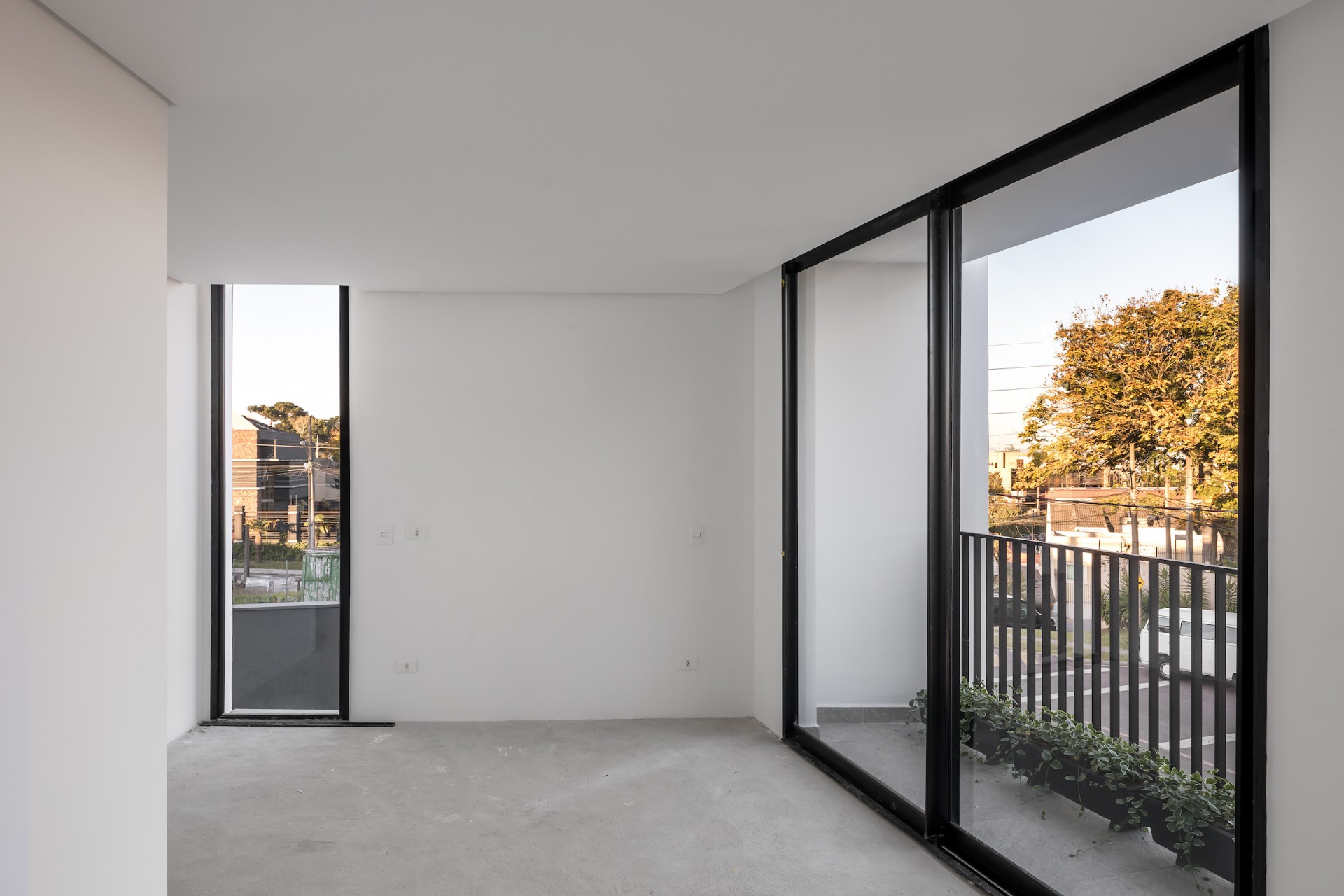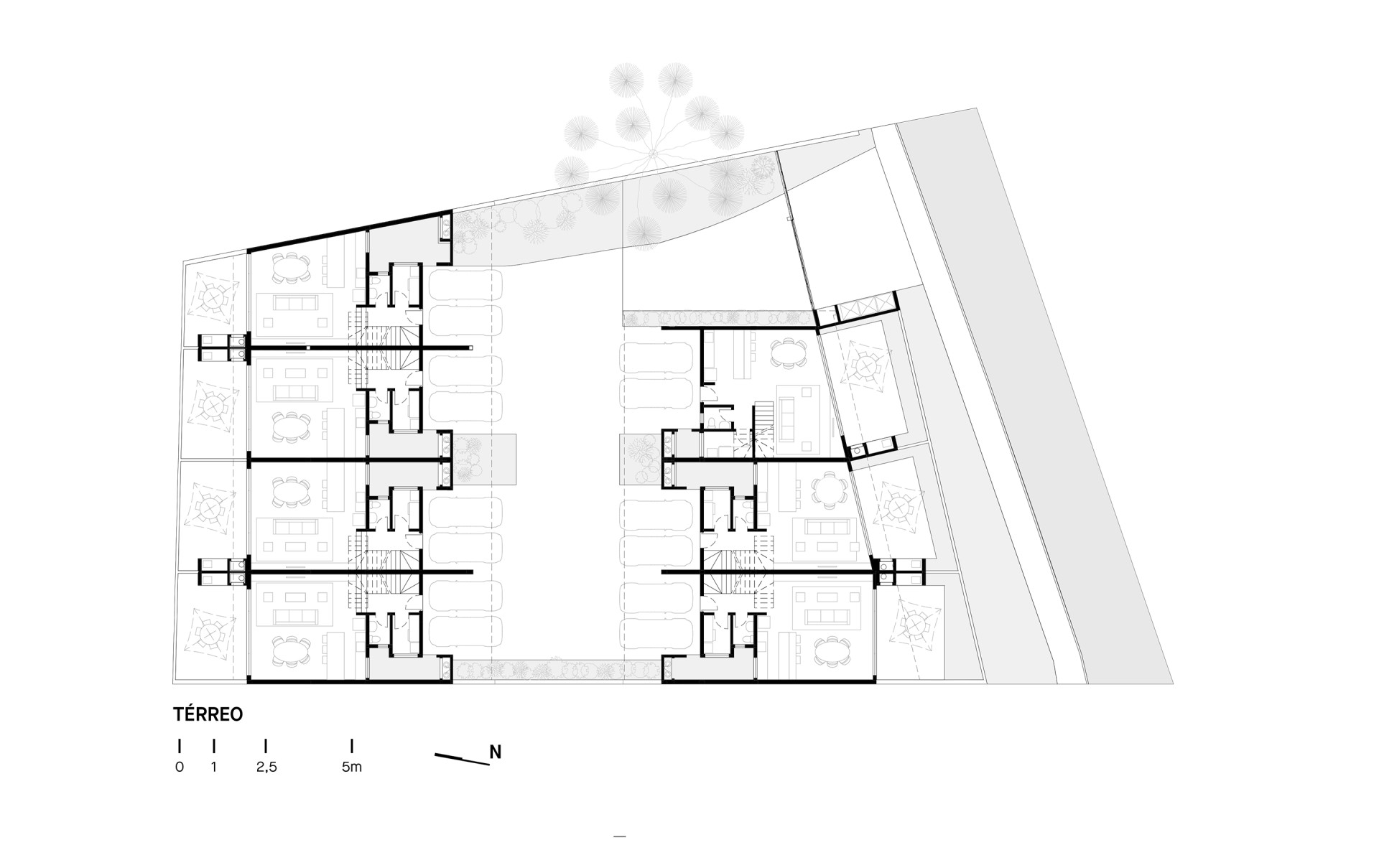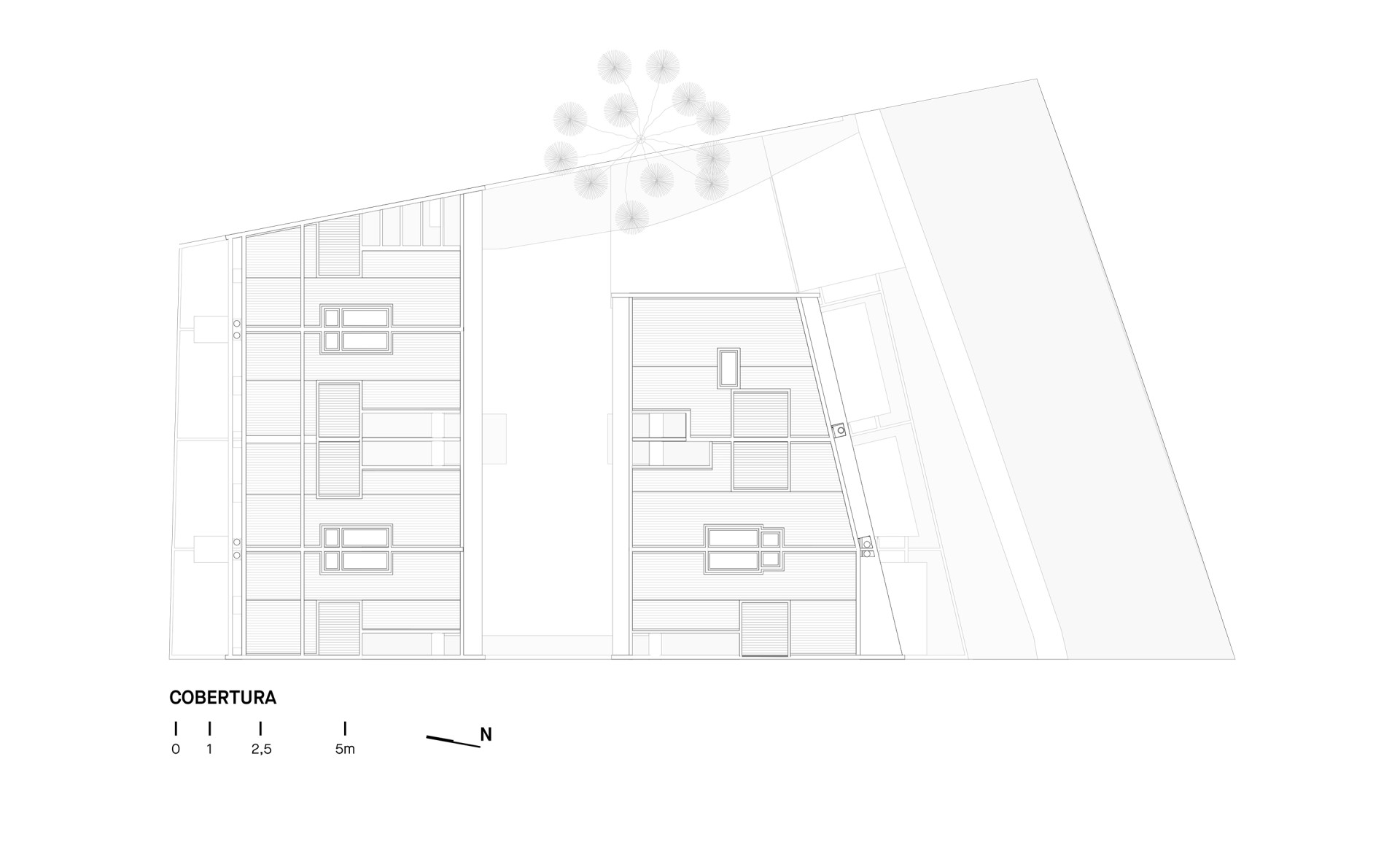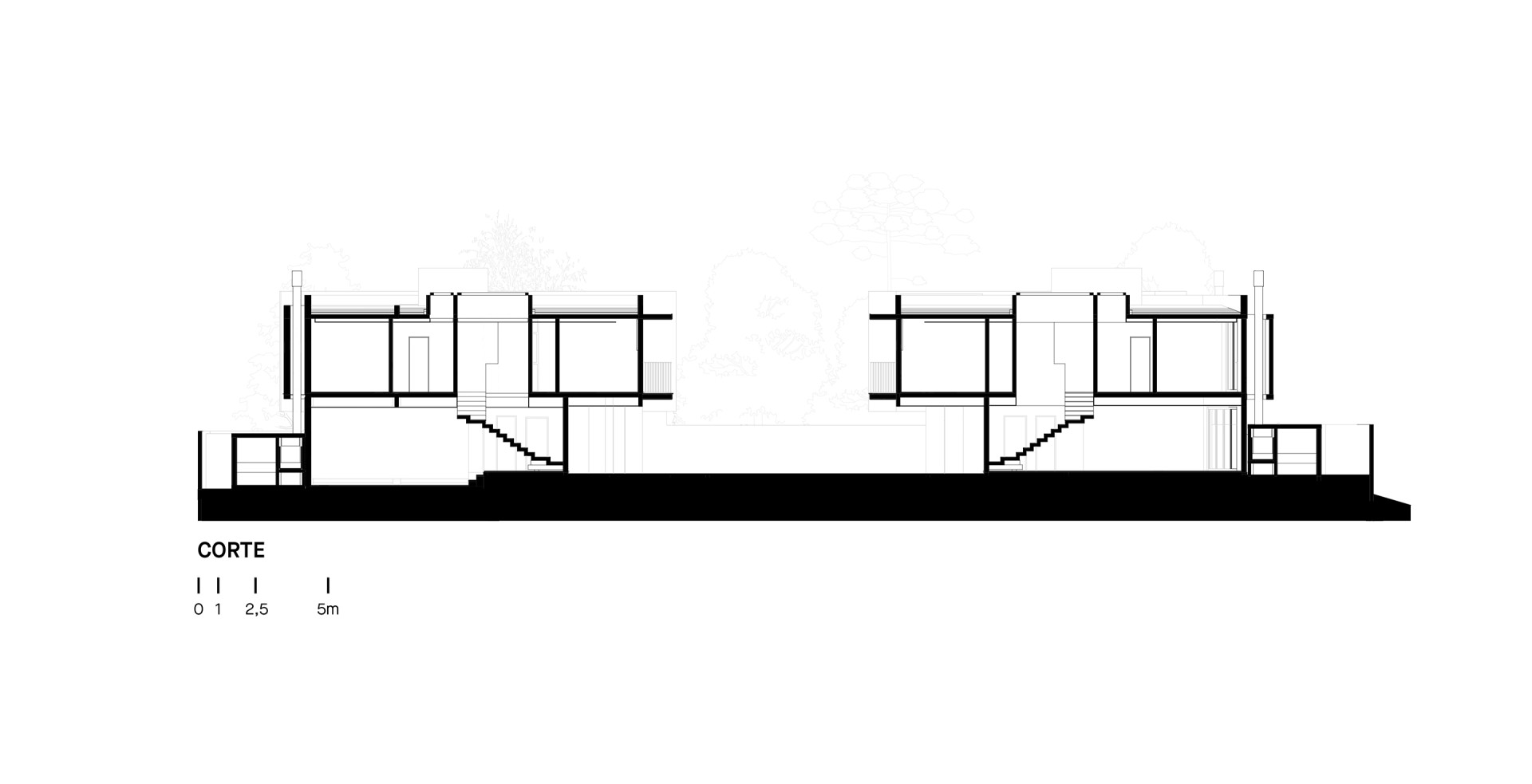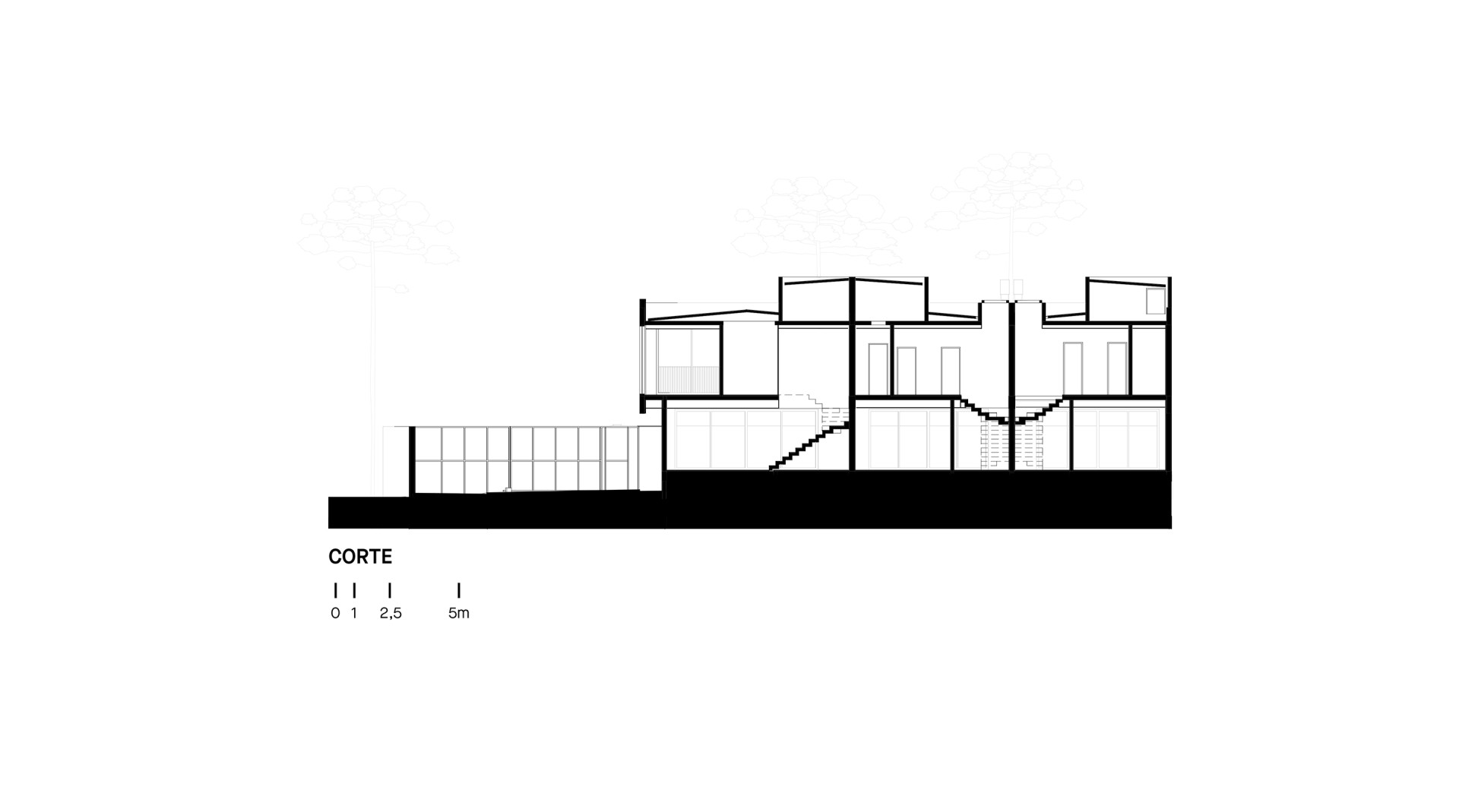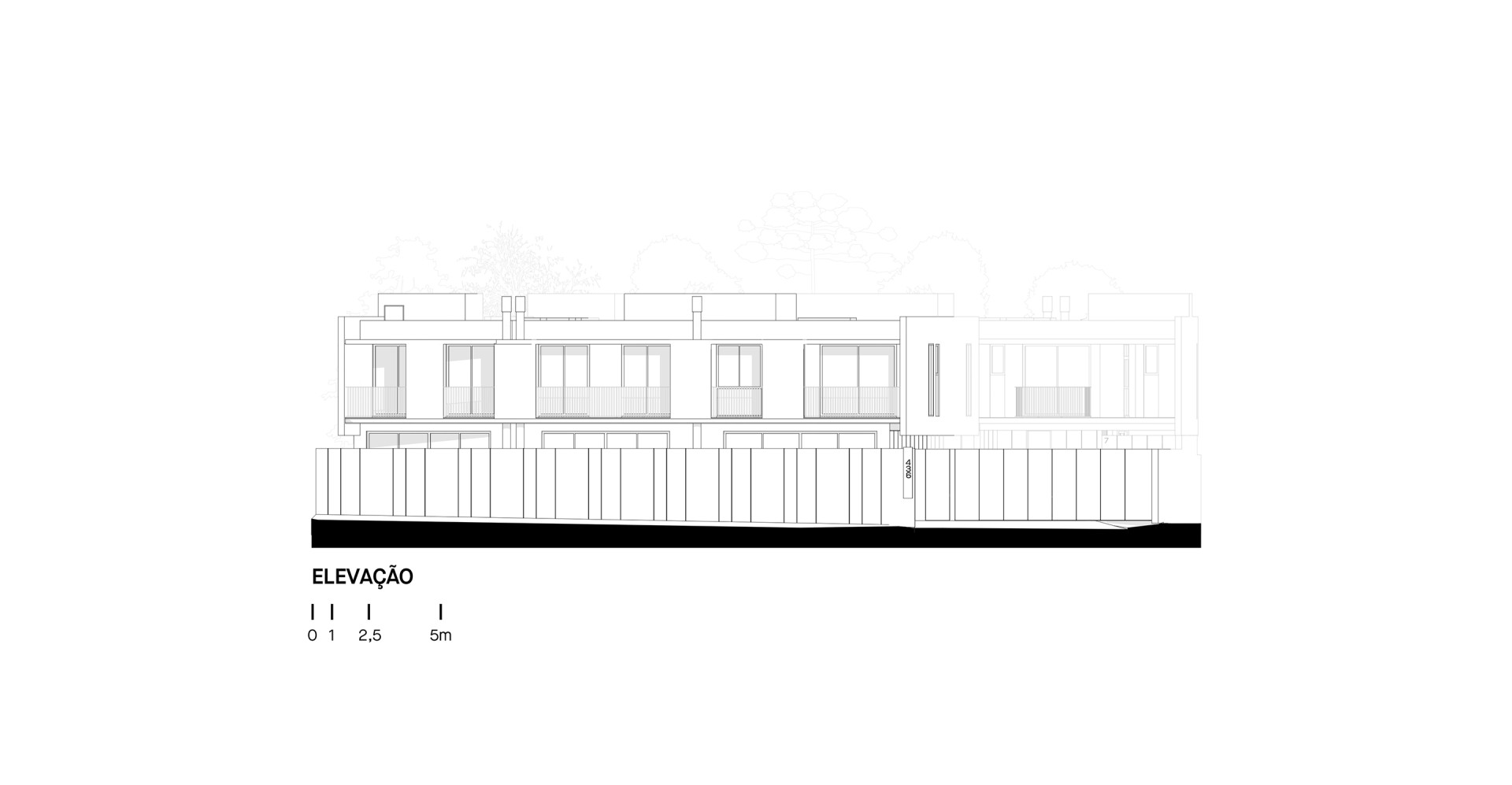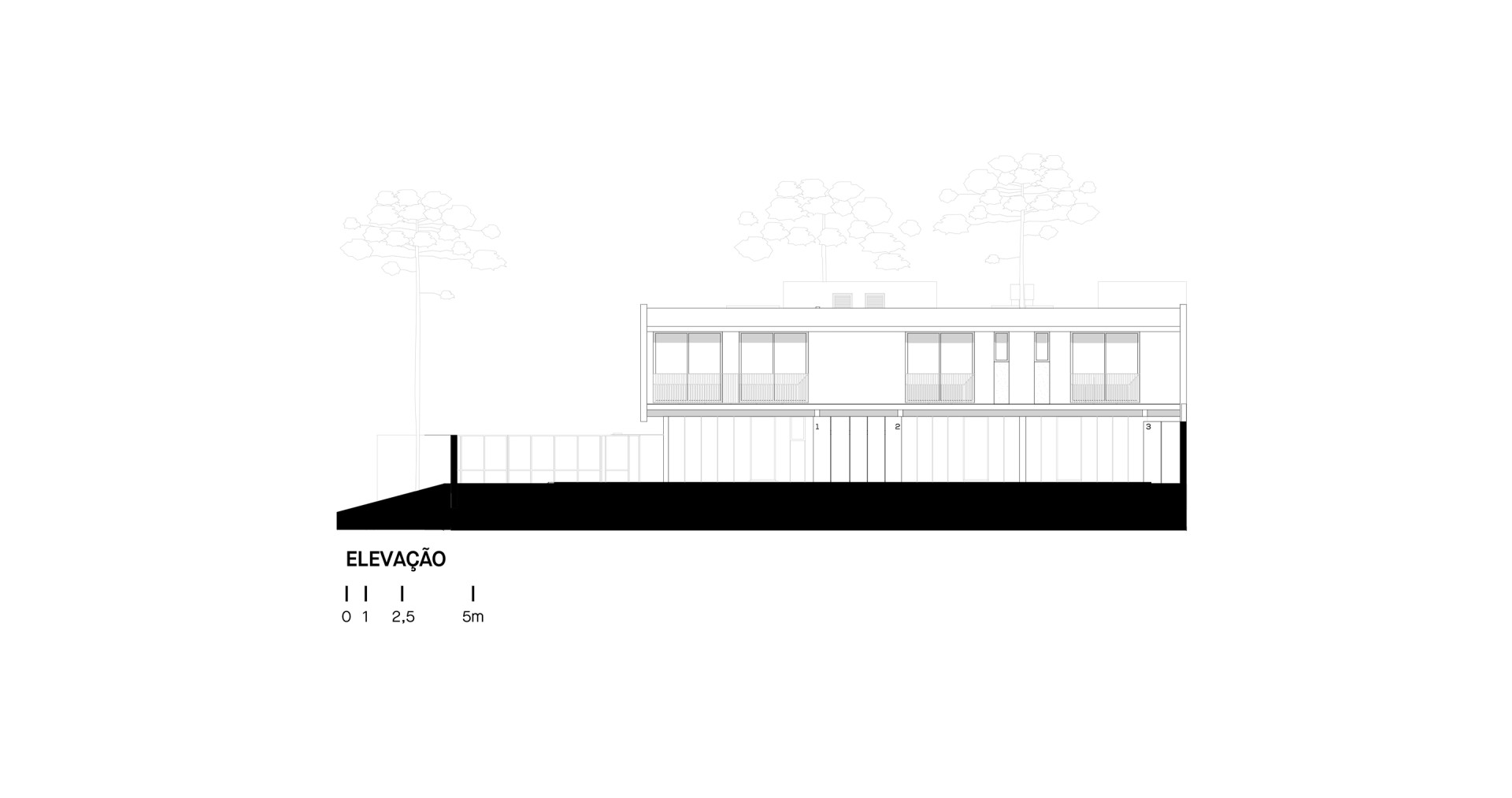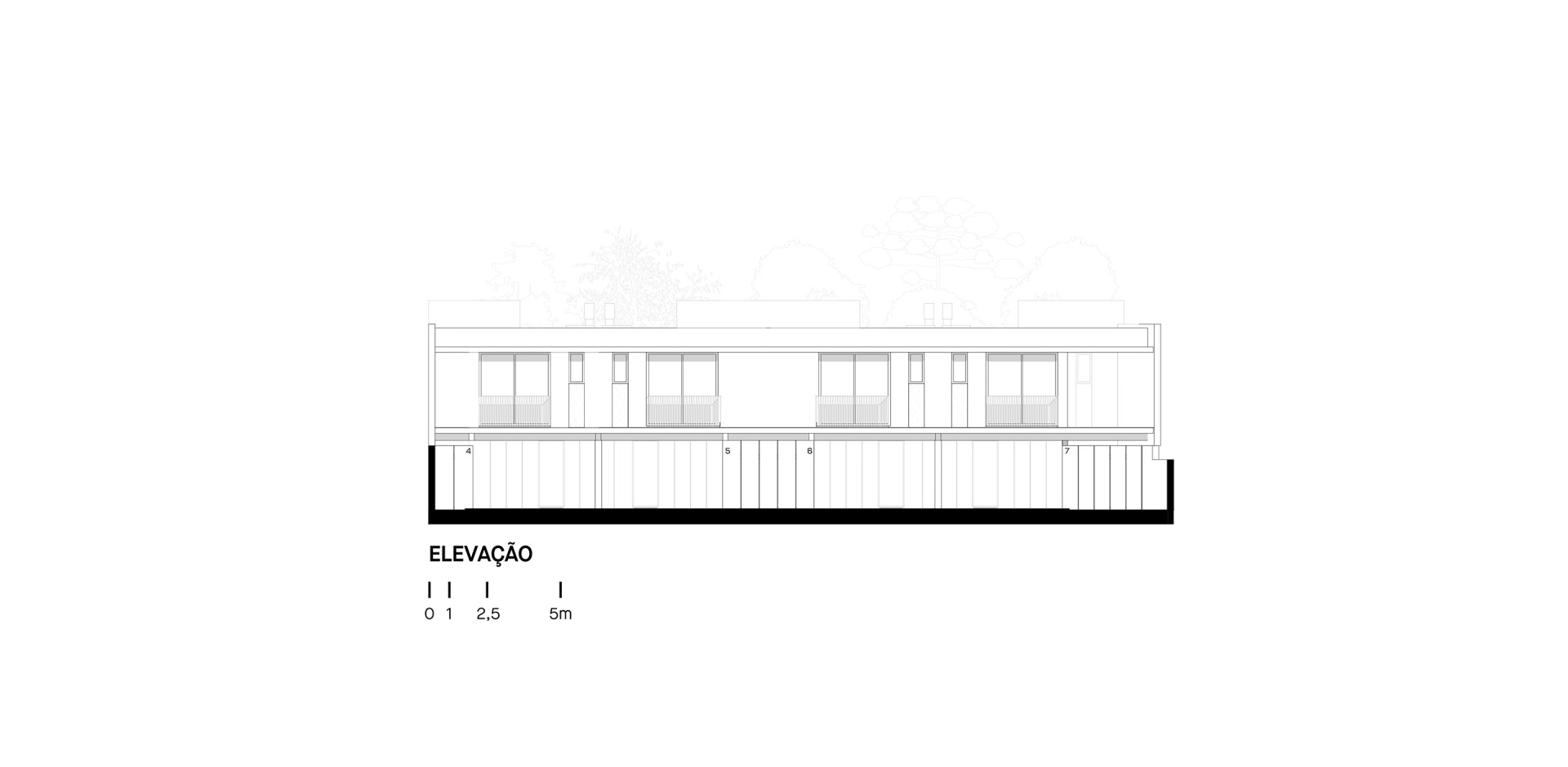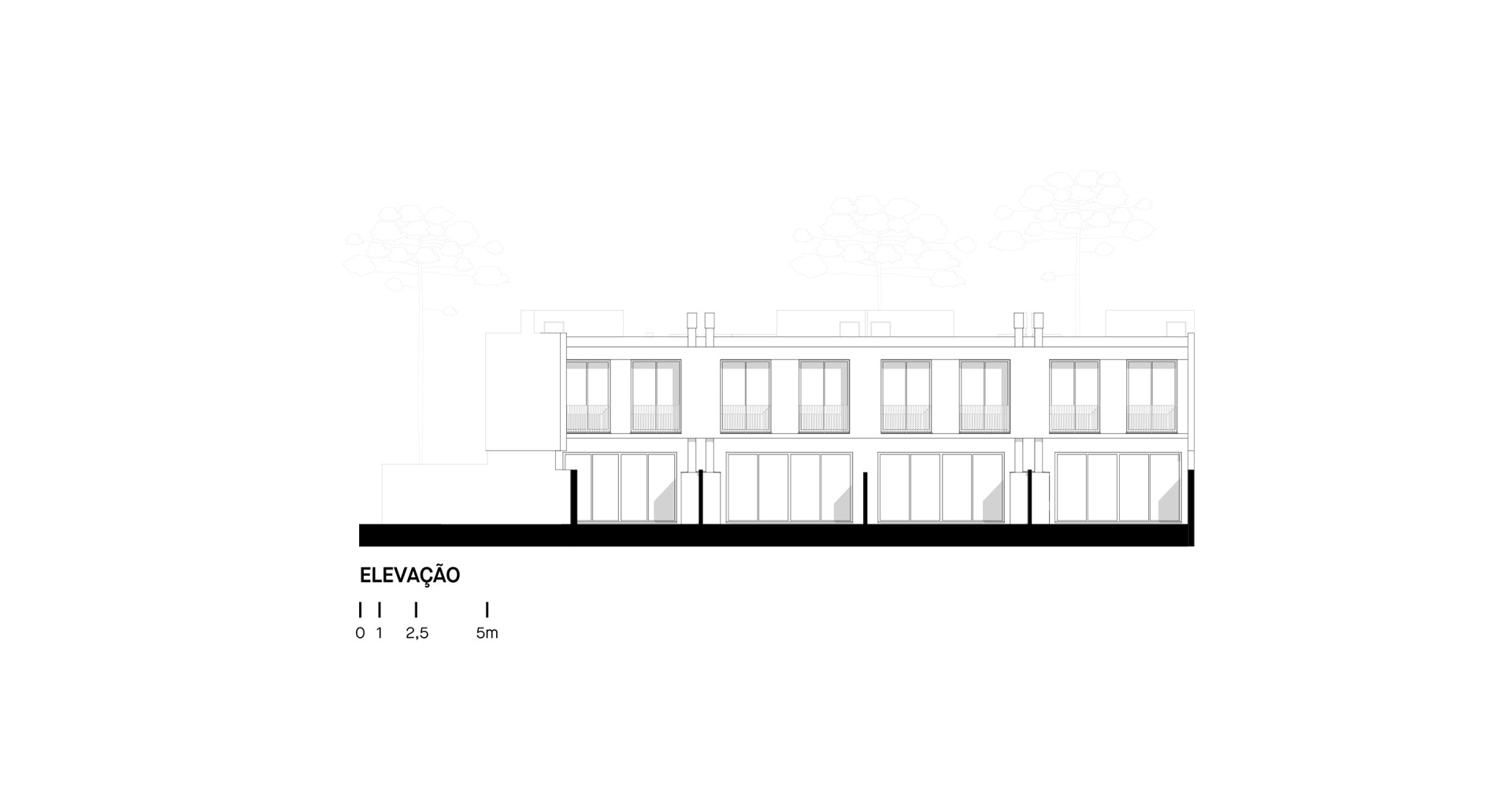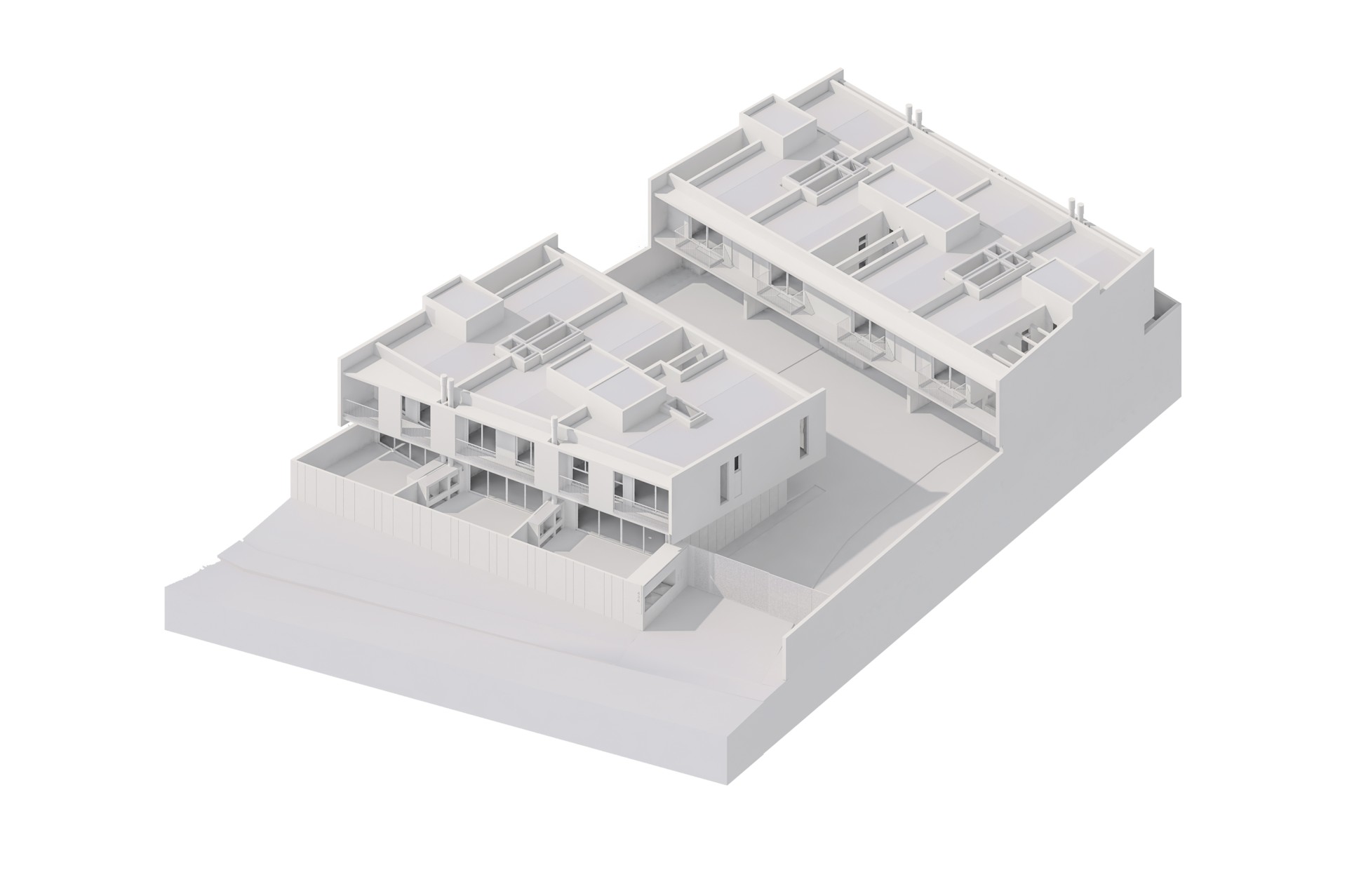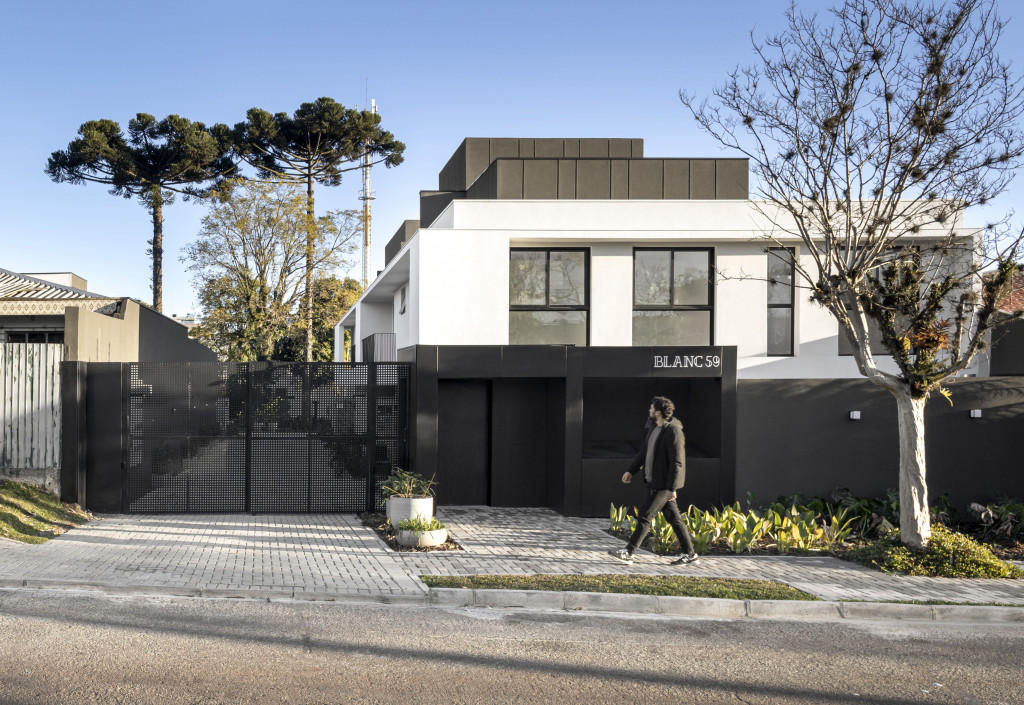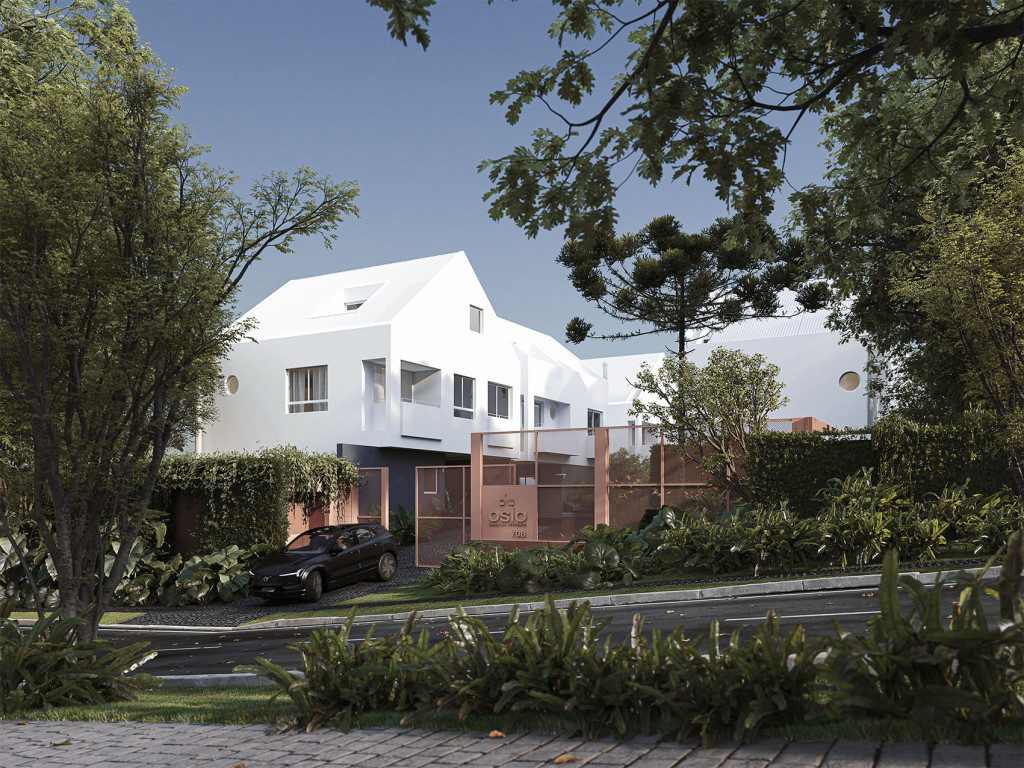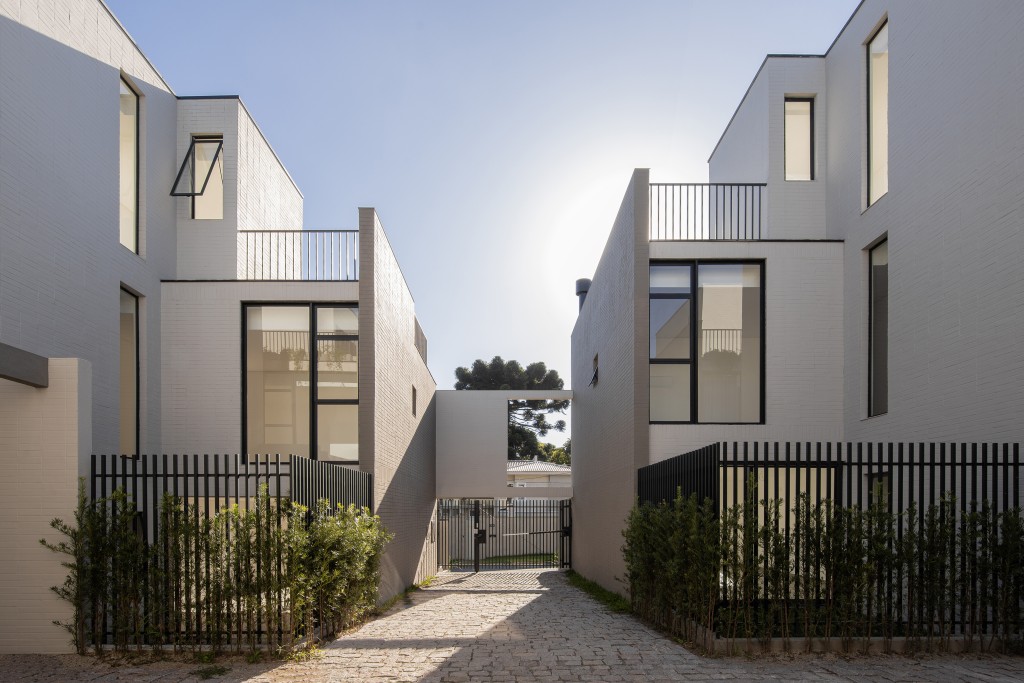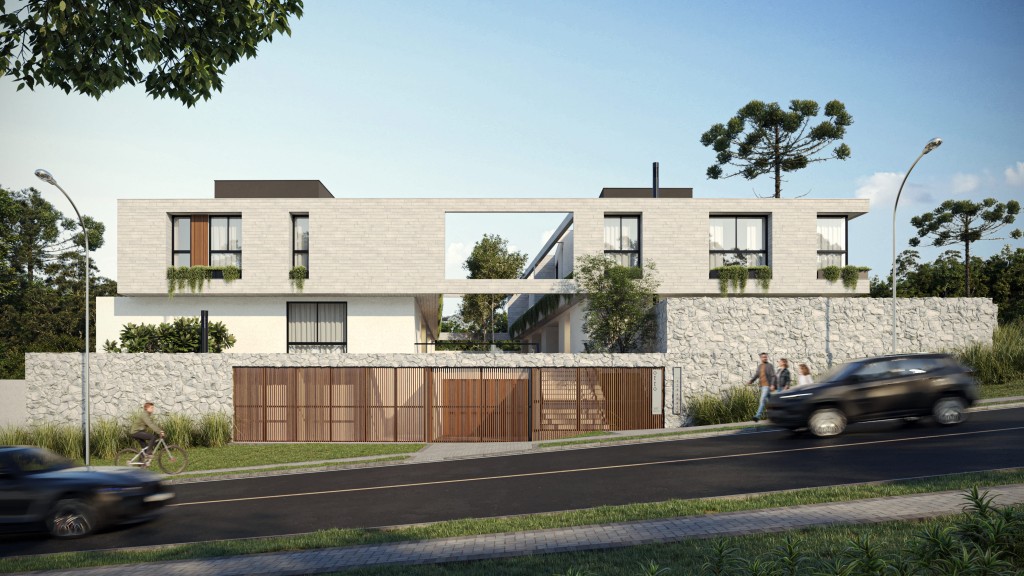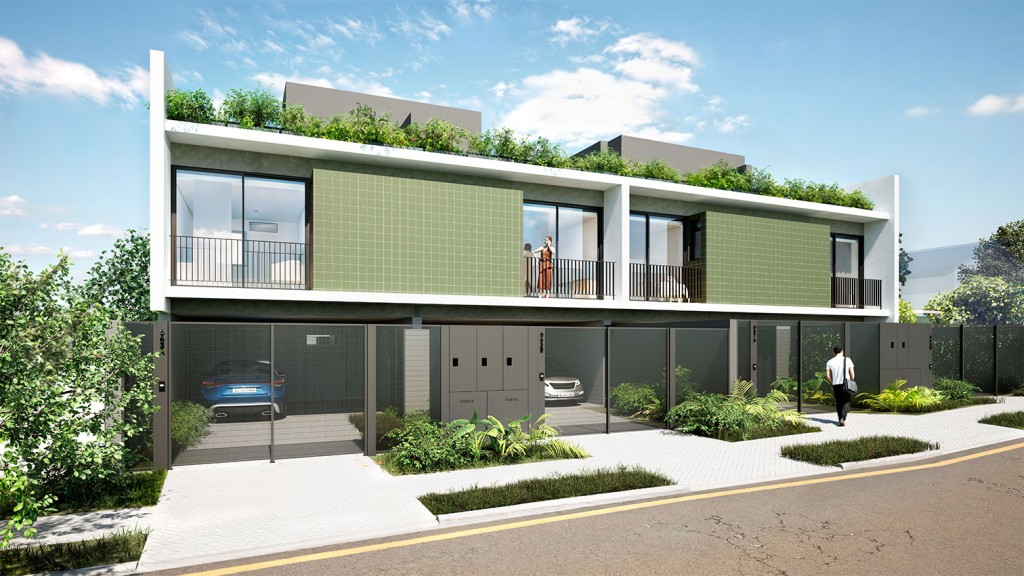-
Project
Set Houses -
Local
Curitiba -PR -
Area
1121m² -
Year
2023
-
Developer and Construction Company
Baltic
-
Photography
Eduardo Macarios
Description
Designing row houses involves concepts such as modulation, repetition and standardization. This model, very present in the urban landscape of Curitiba, is usually represented by two-story houses with roofs, arranged side by side, which do not formally communicate with each other. When we received the demand from the client and builder, we faced the challenge of materializing a formal unity by combining seven distinct residences without losing the identity and individuality of each house. Since the rectangular plot has the shortest front facing the street, the layout was arranged in two perpendicular lines to the longer side of the lot, with three units facing the street and four facing the backyard. Access is through a common entrance, located just below the radius of an araucaria tree, which leads to an internal street. This entrance and circulation space also allows for interaction among the residents, creating a village-like atmosphere by prioritizing pedestrians and unifying the stone flooring in the garages and boulevard as a shared pathway. The ensemble is sought to separate the upper floor, in white, from the lower floor, in dark gray, in order to create a horizontal reading of the block. Side panels at the ends of the volume reinforce the idea of uniformity by integrating all the houses through cantilevered balcony slabs as unified masses. The layout of the program placed the service areas right at the entrance of each house, while the social areas face the private gardens, which, combined with the good distance between the residences, ensures privacy for the inhabitants. To enhance the entry of light into the central areas of the floor plan, openings and voids were created in the volume, forming frames for the laundry areas and also providing better ventilation for the bedrooms. In the end, the project prioritized a comprehensive reading of the architecture while creating singularities for each unit, opposing the physical division that the typology tends to reproduce.

